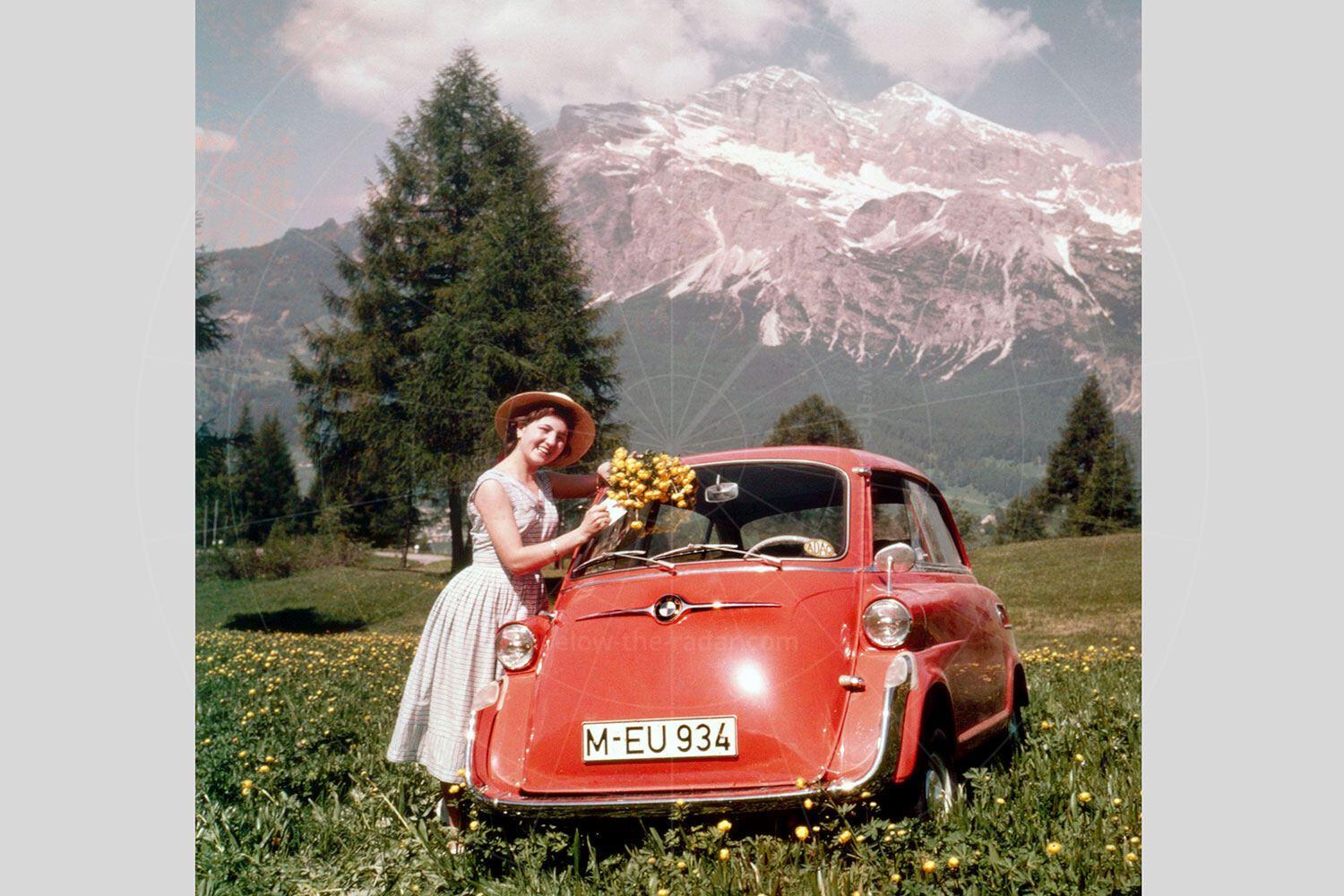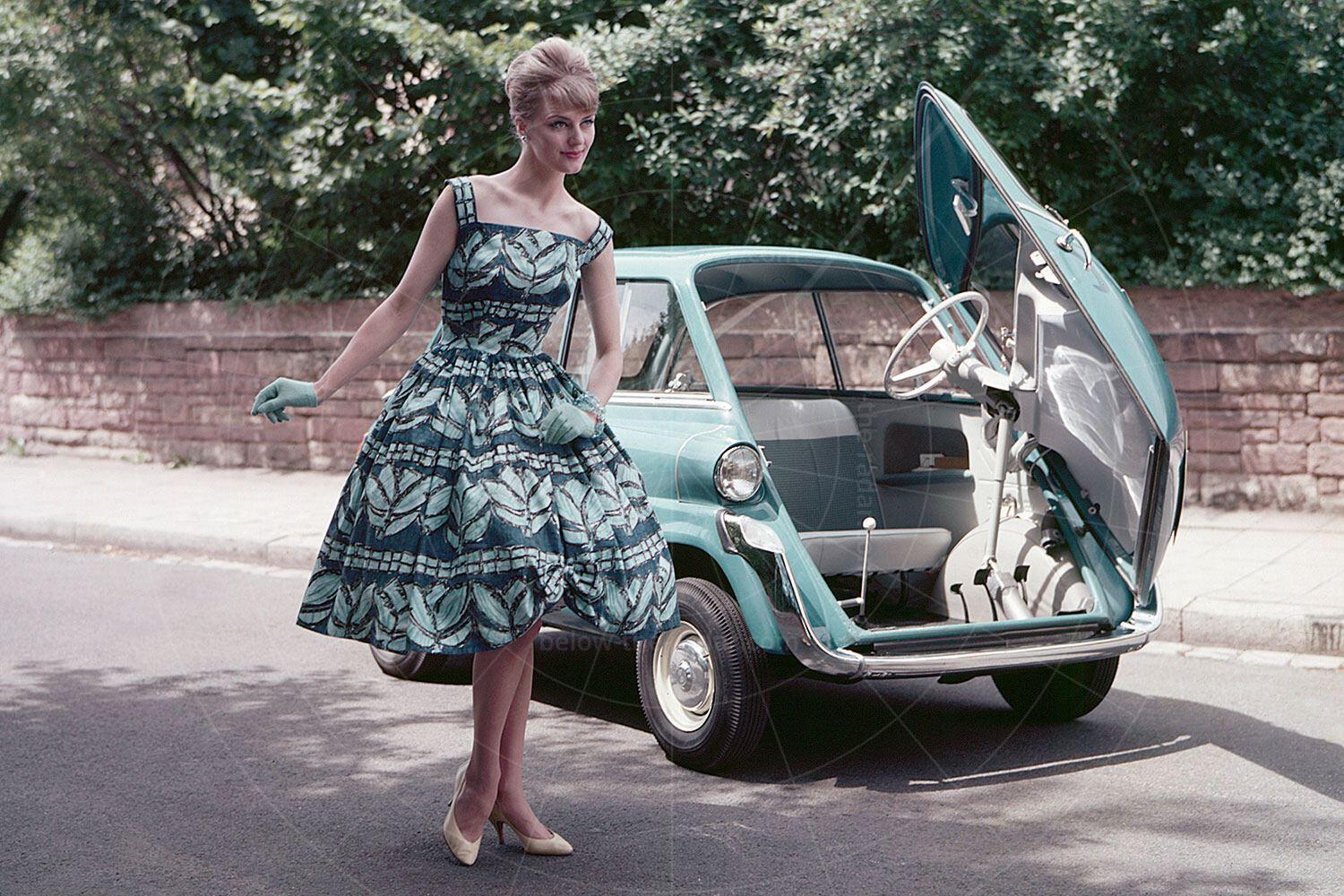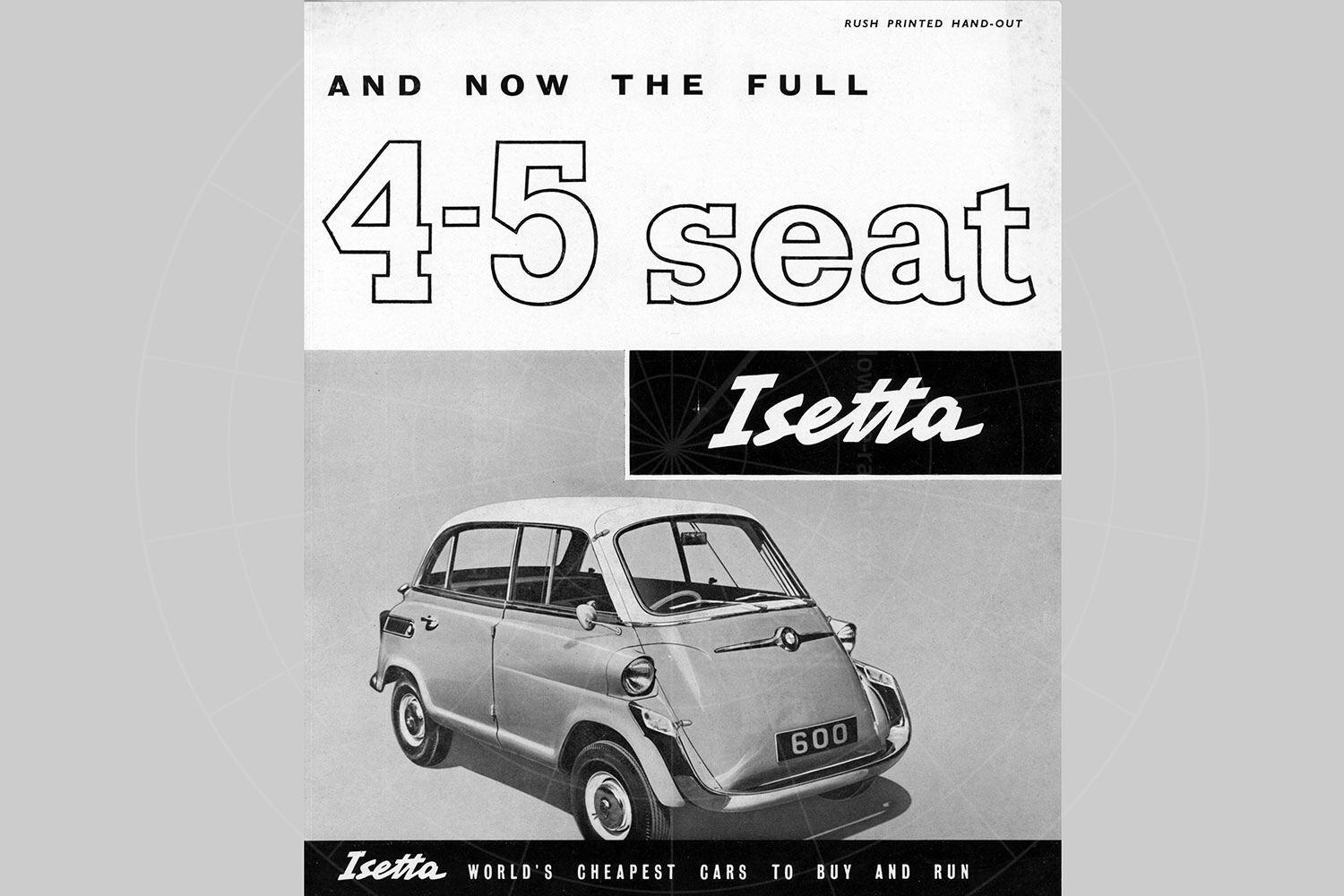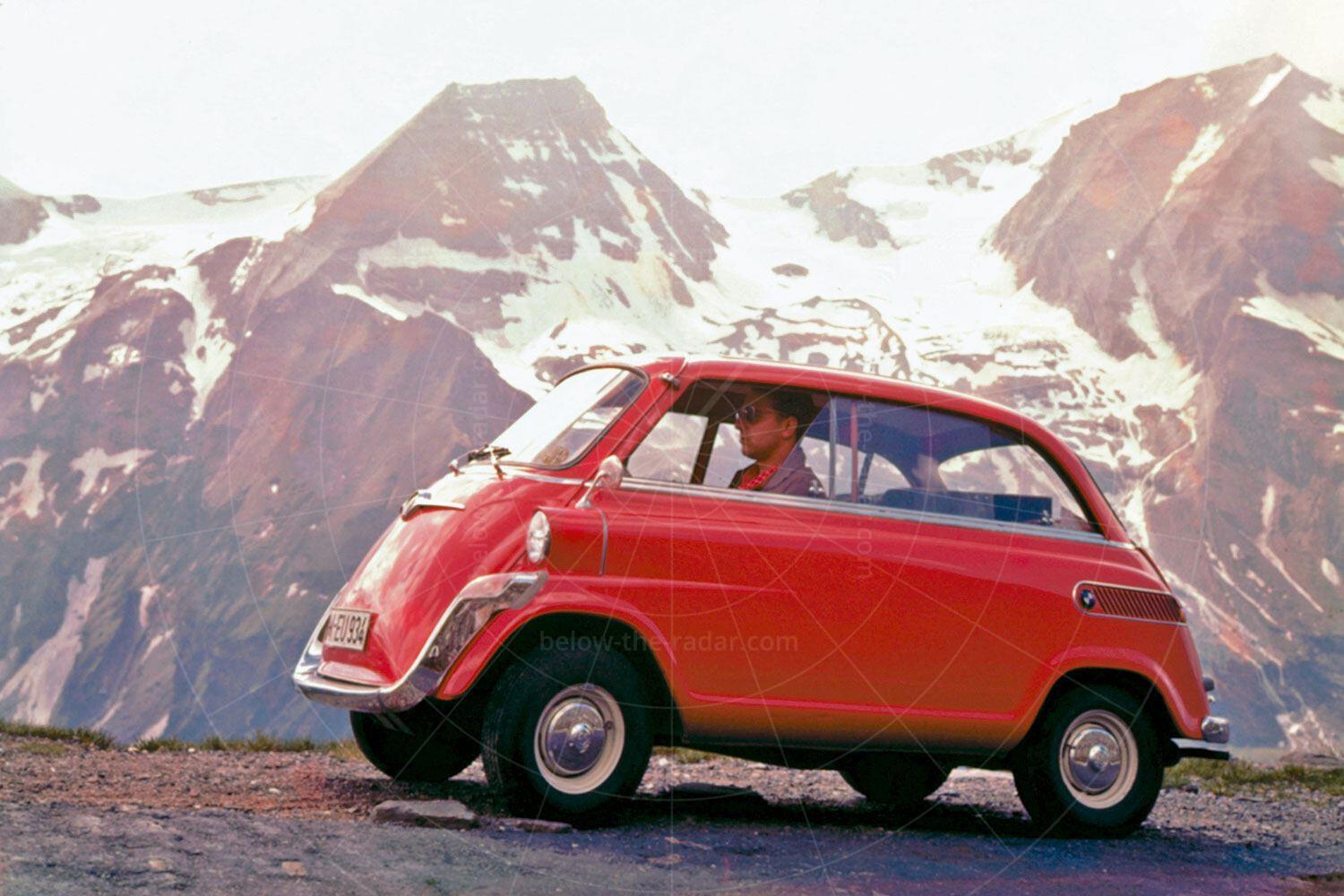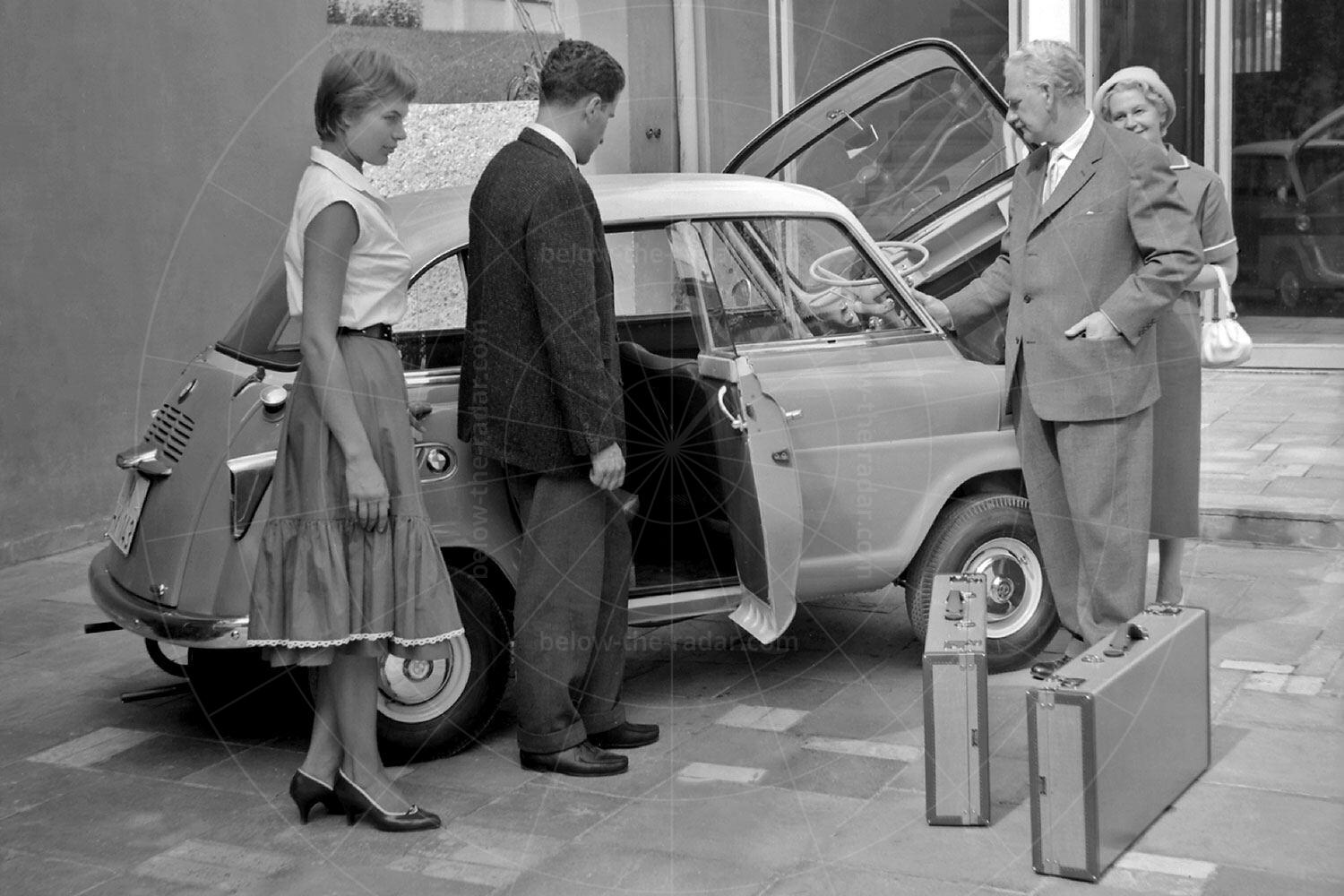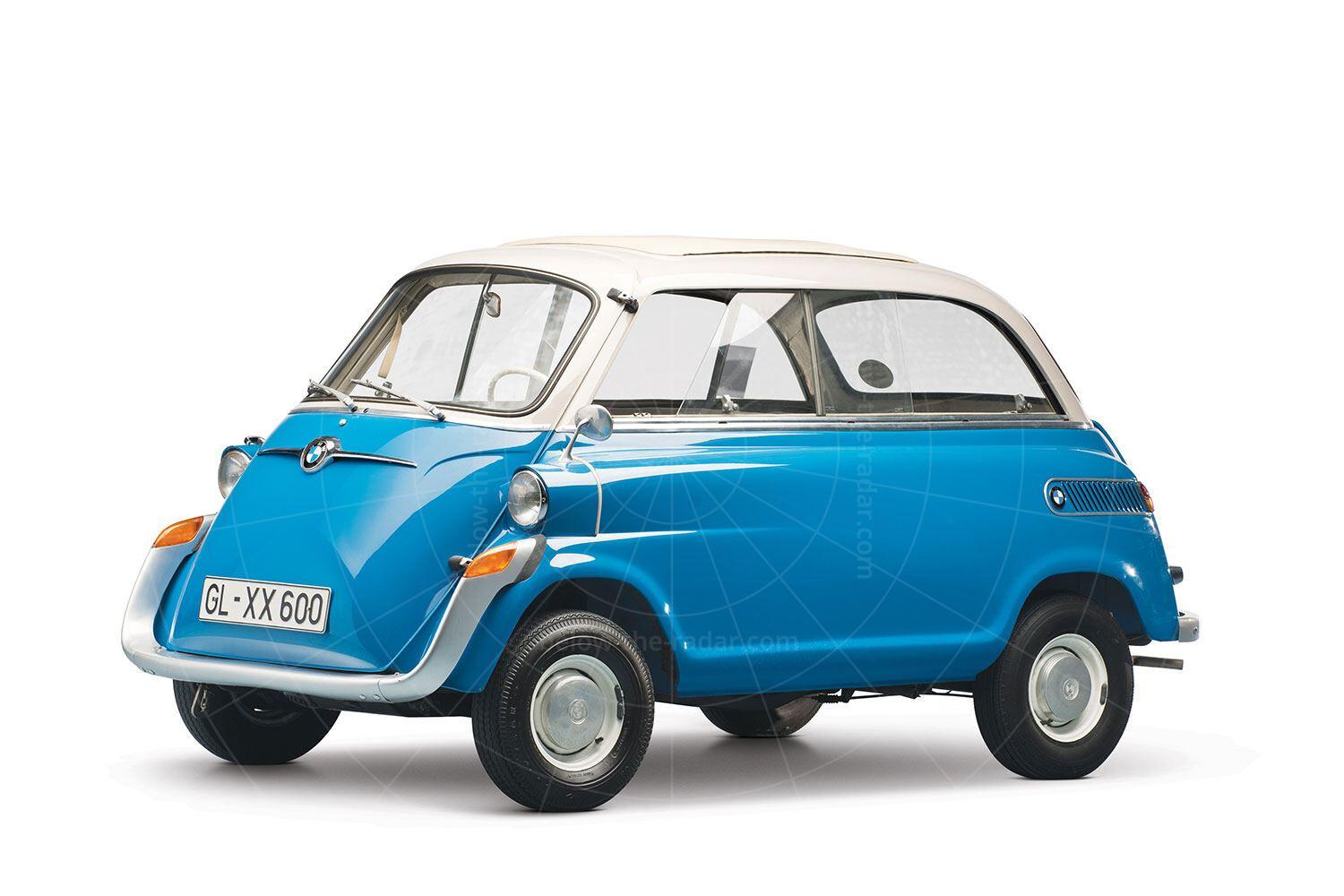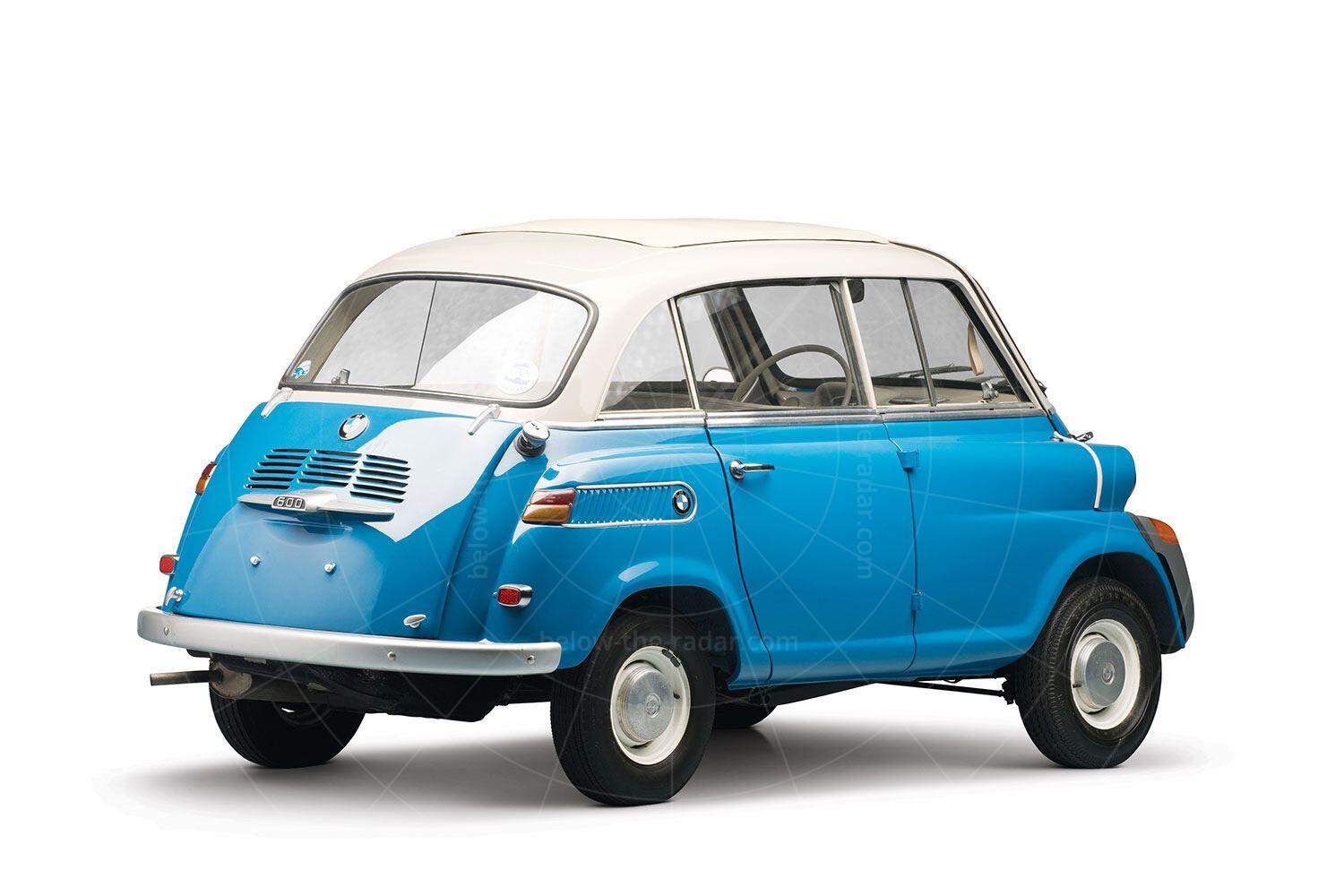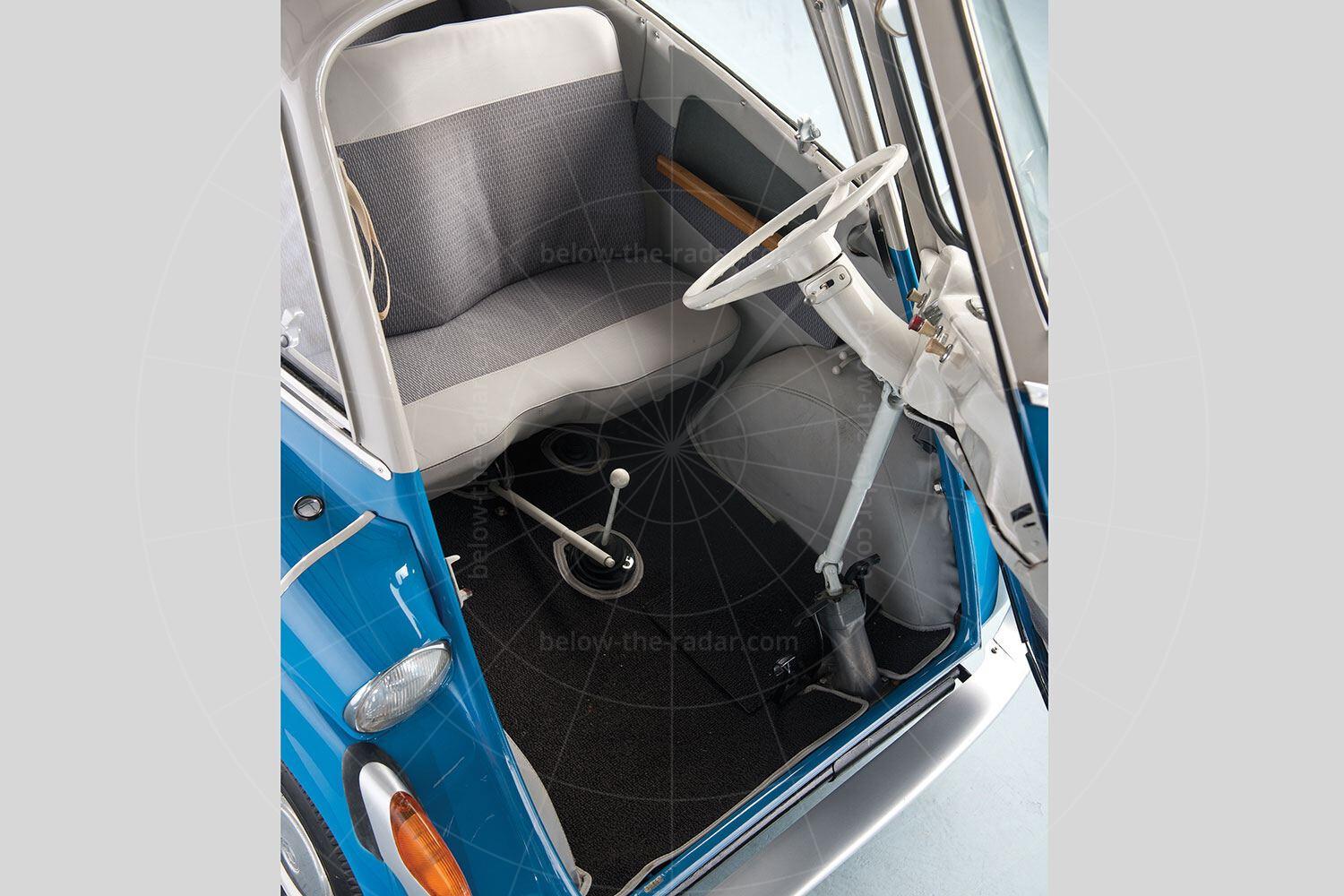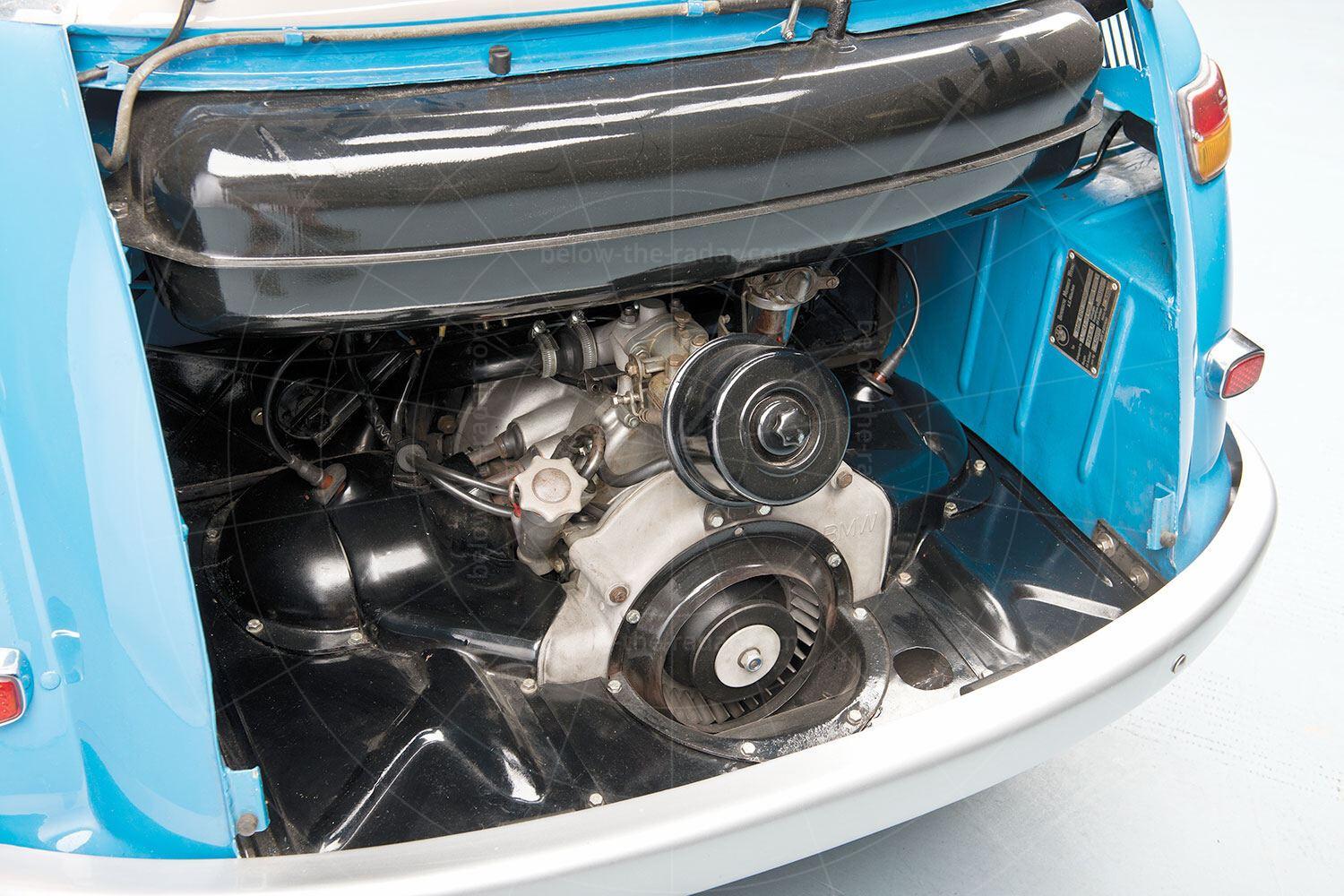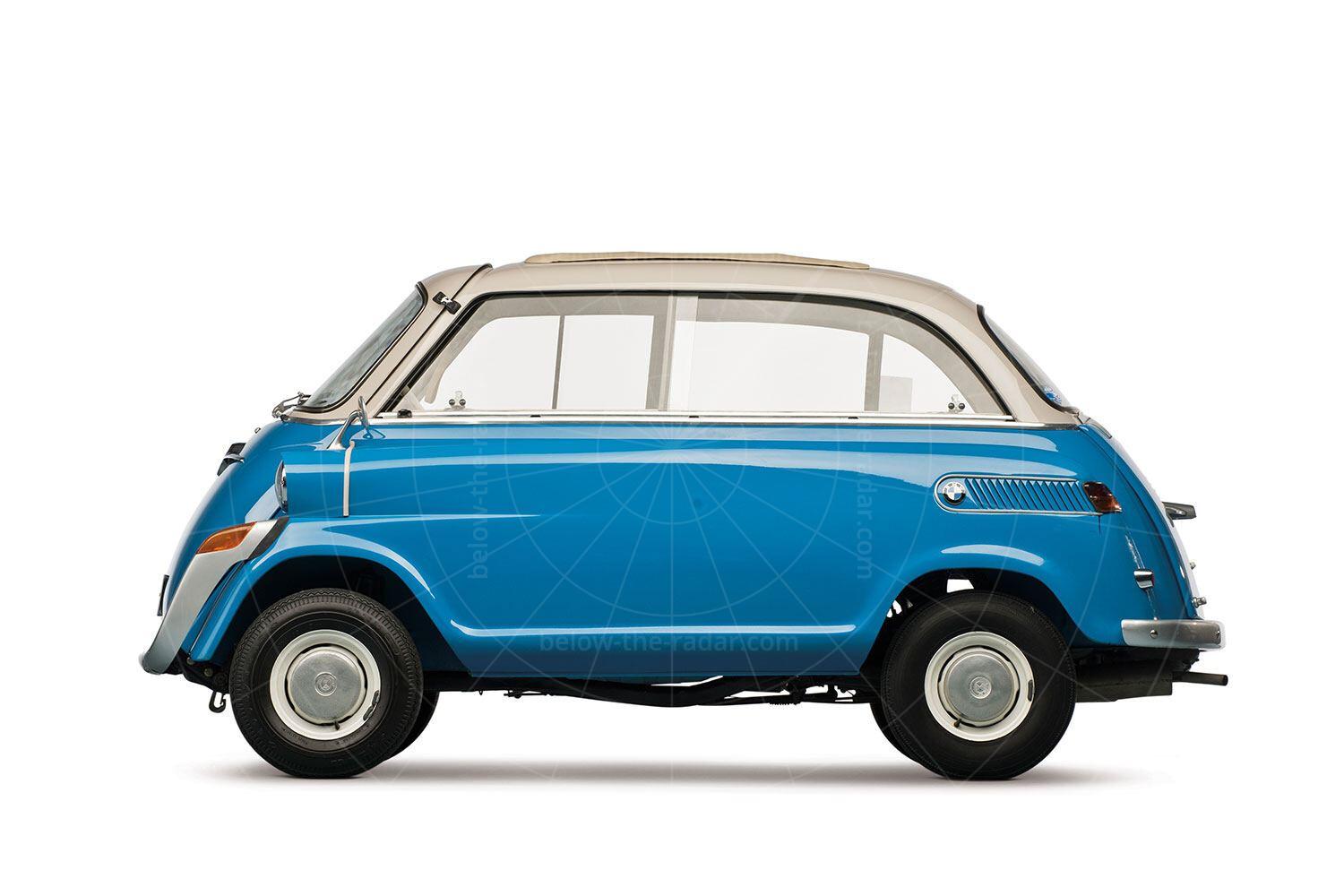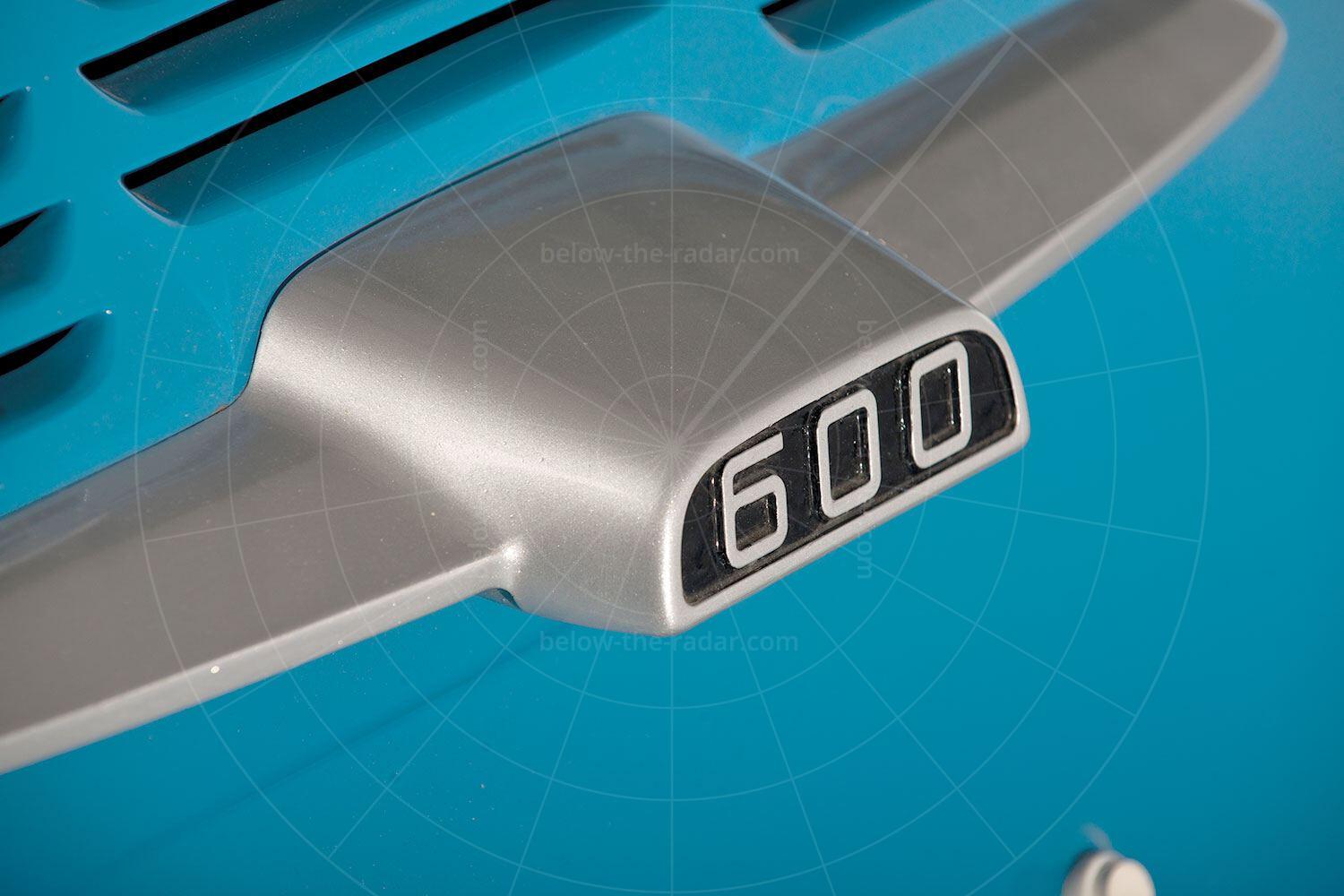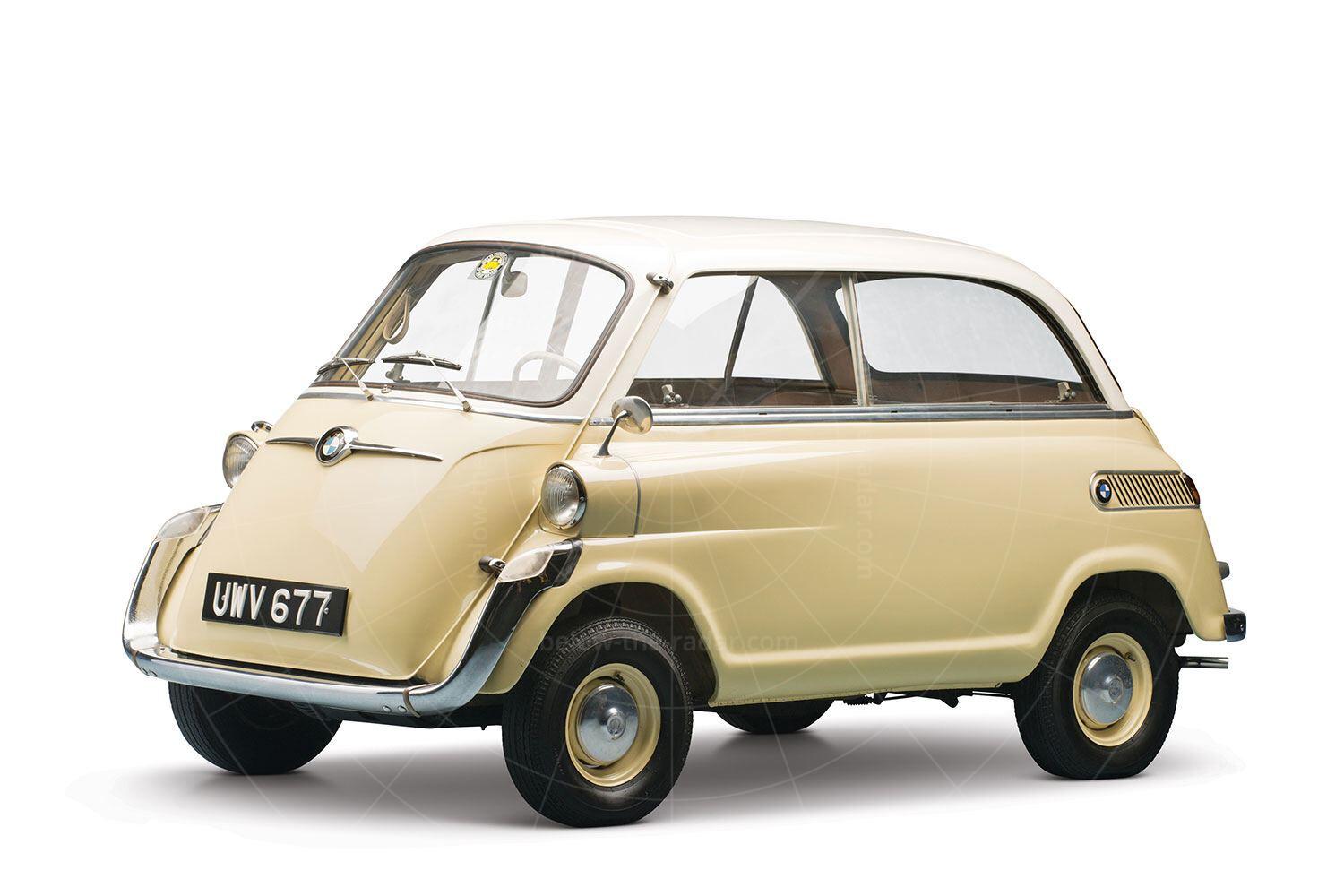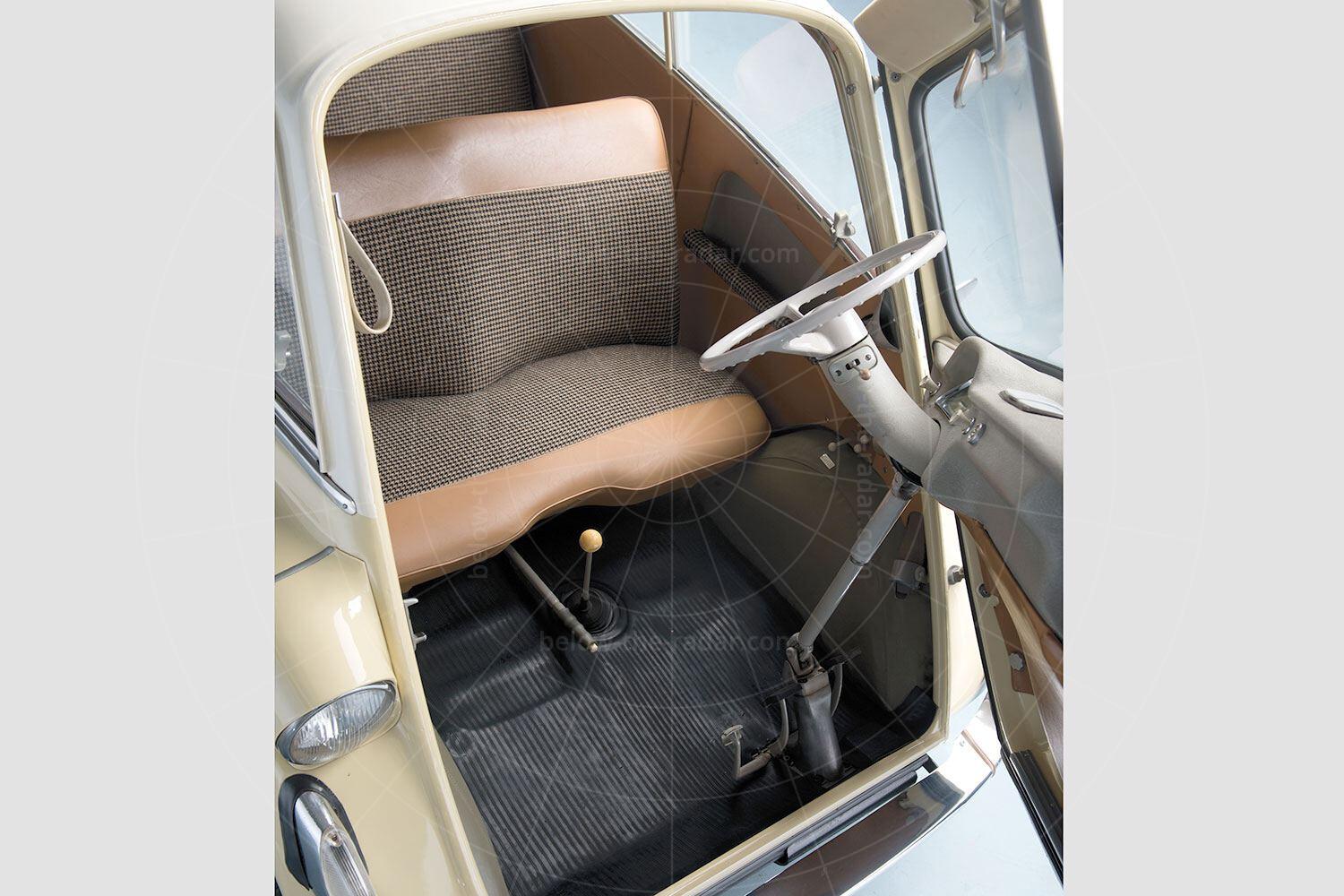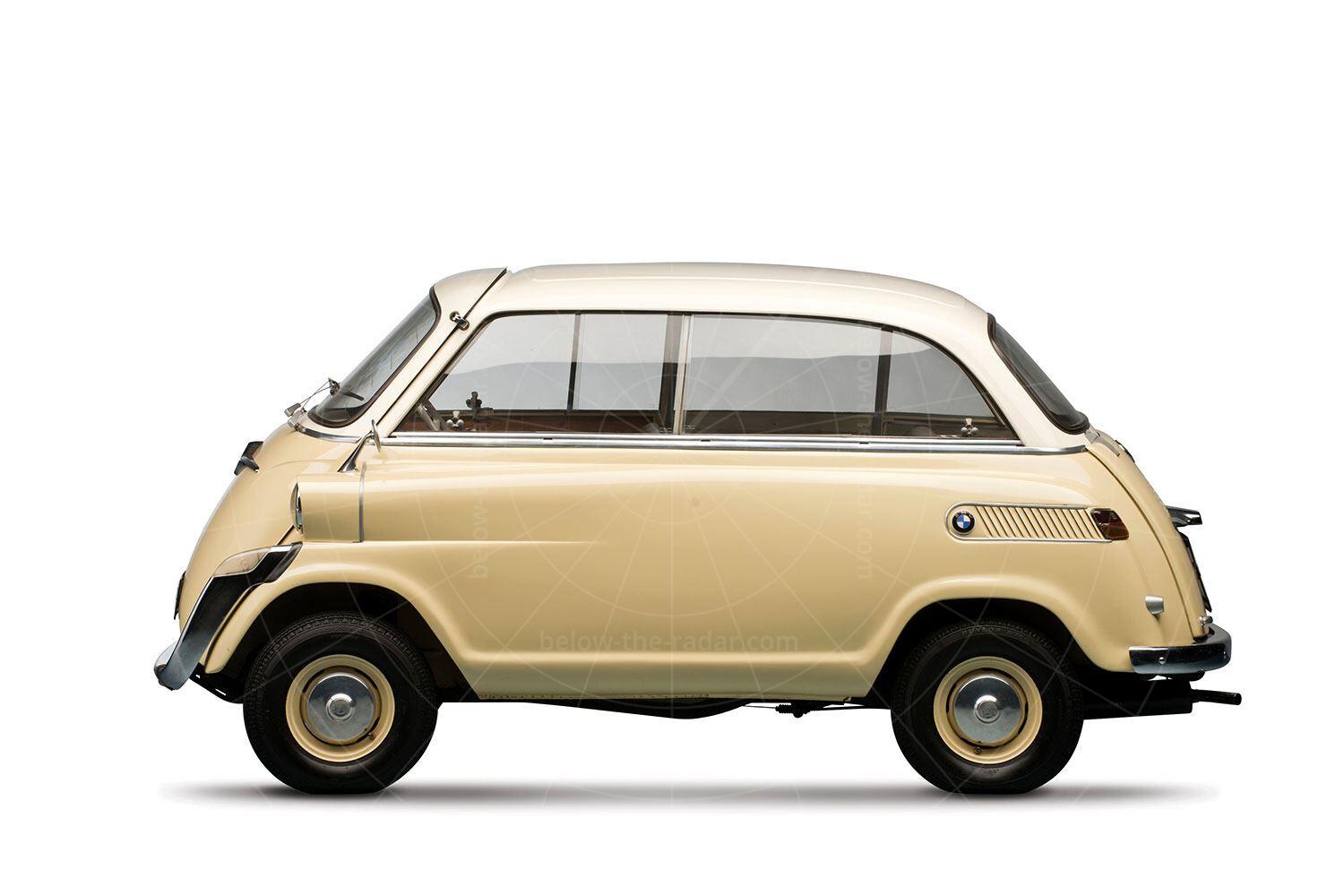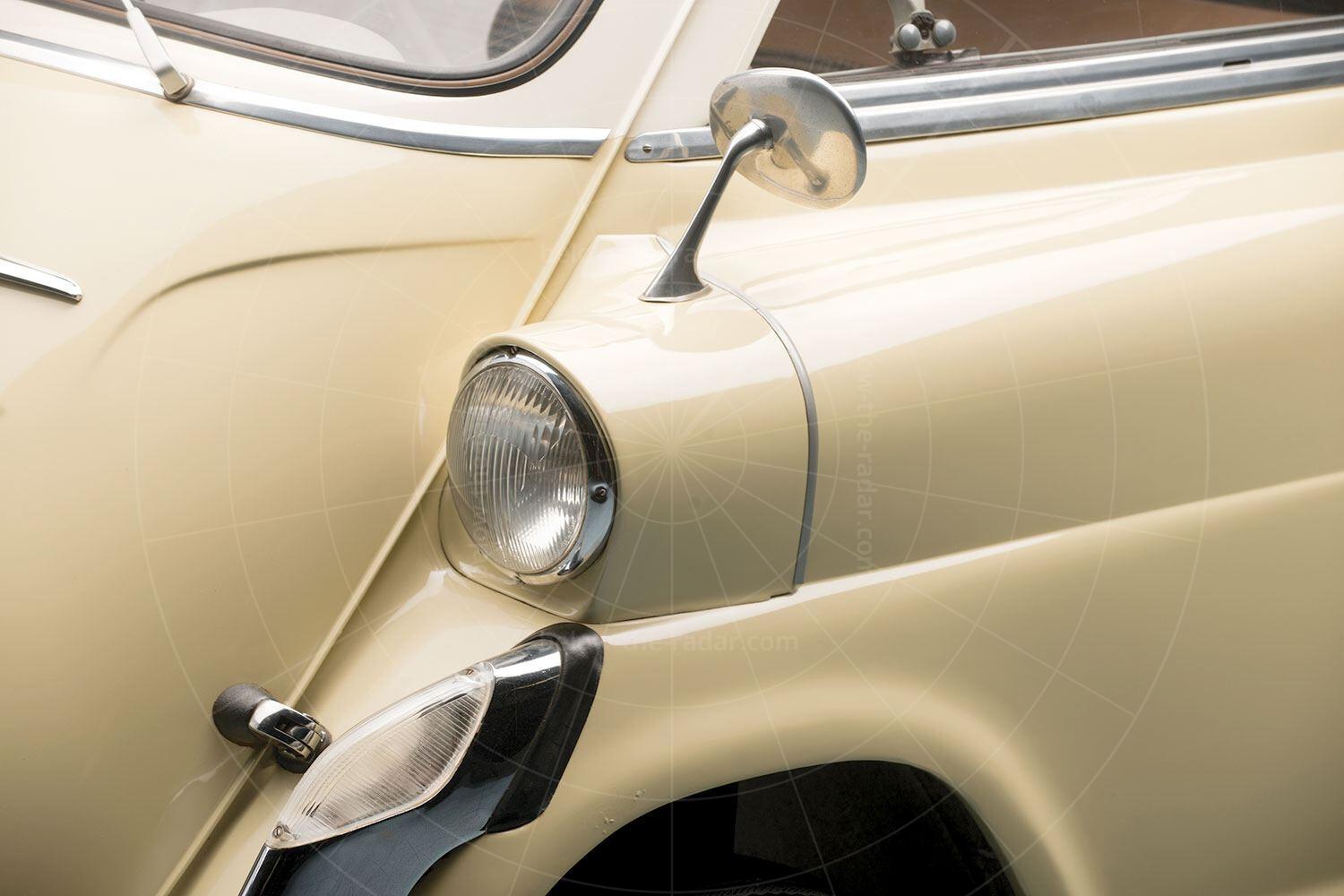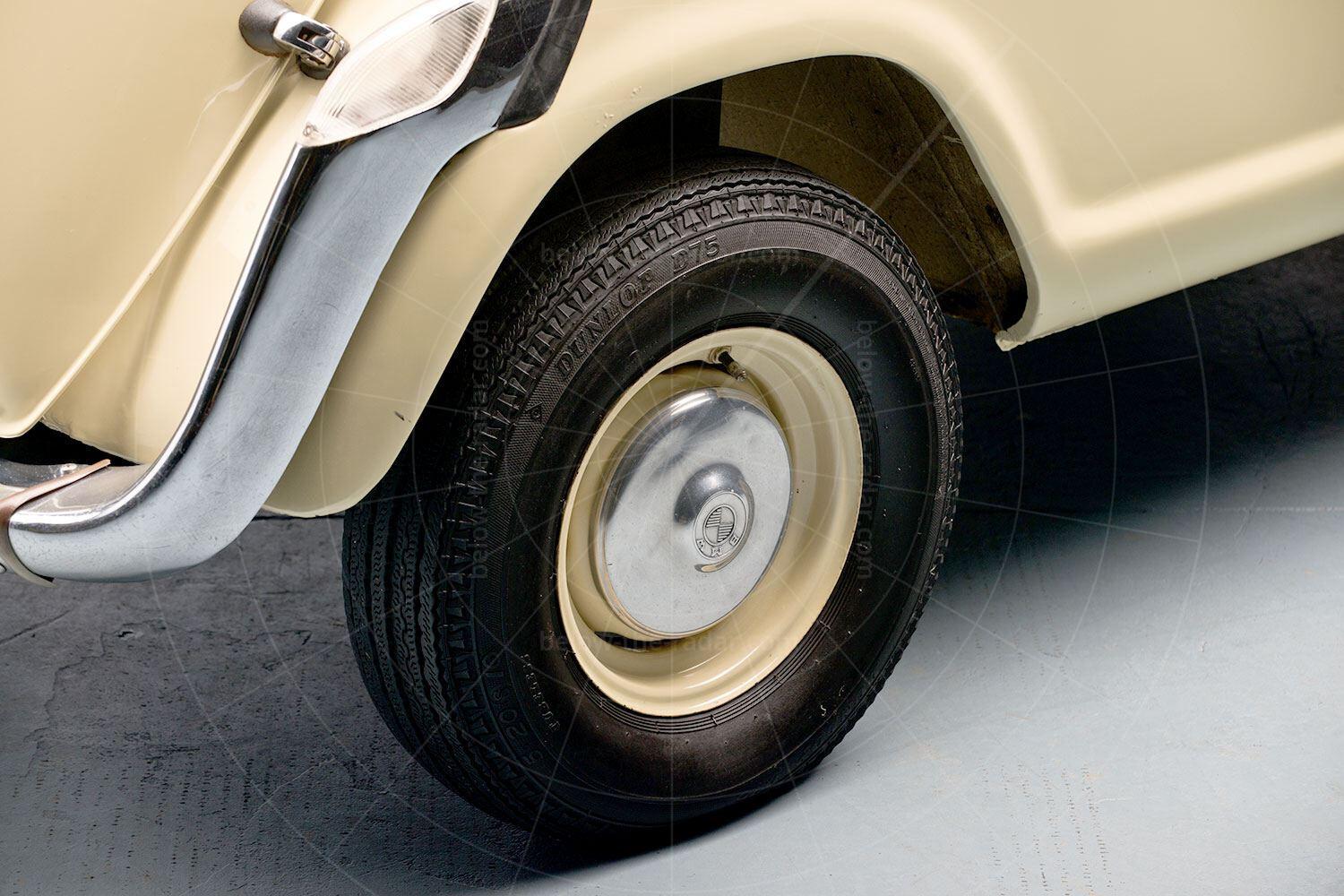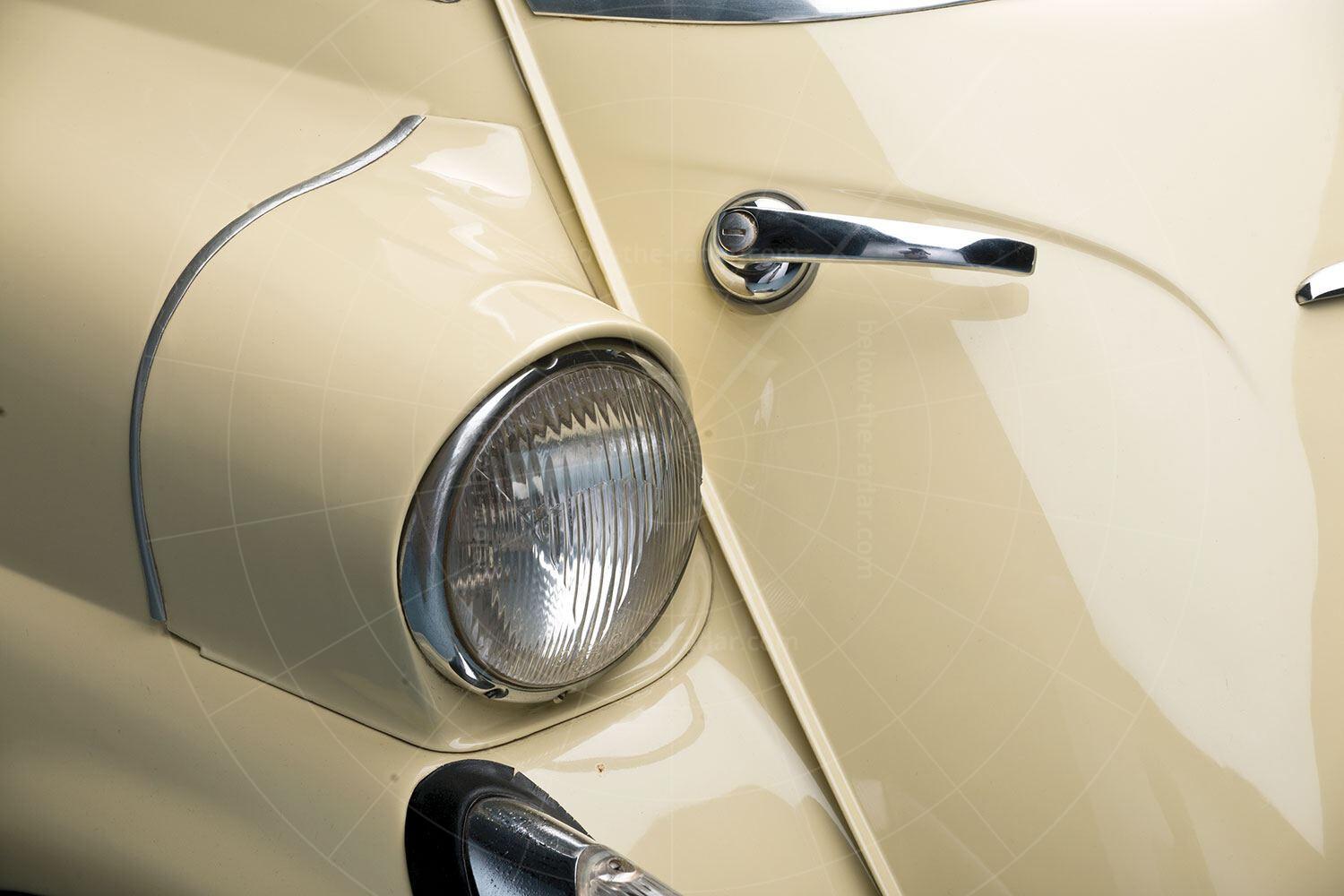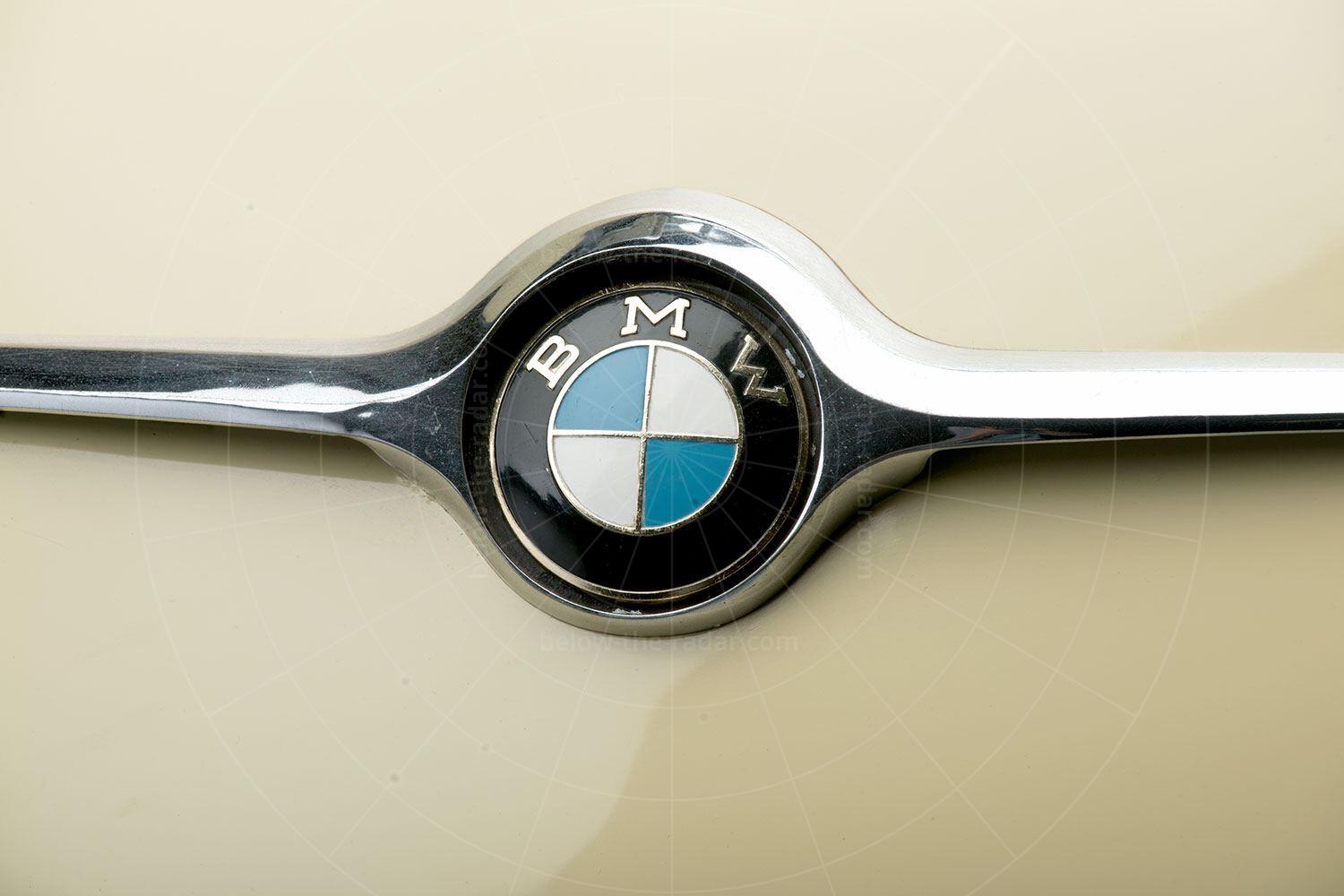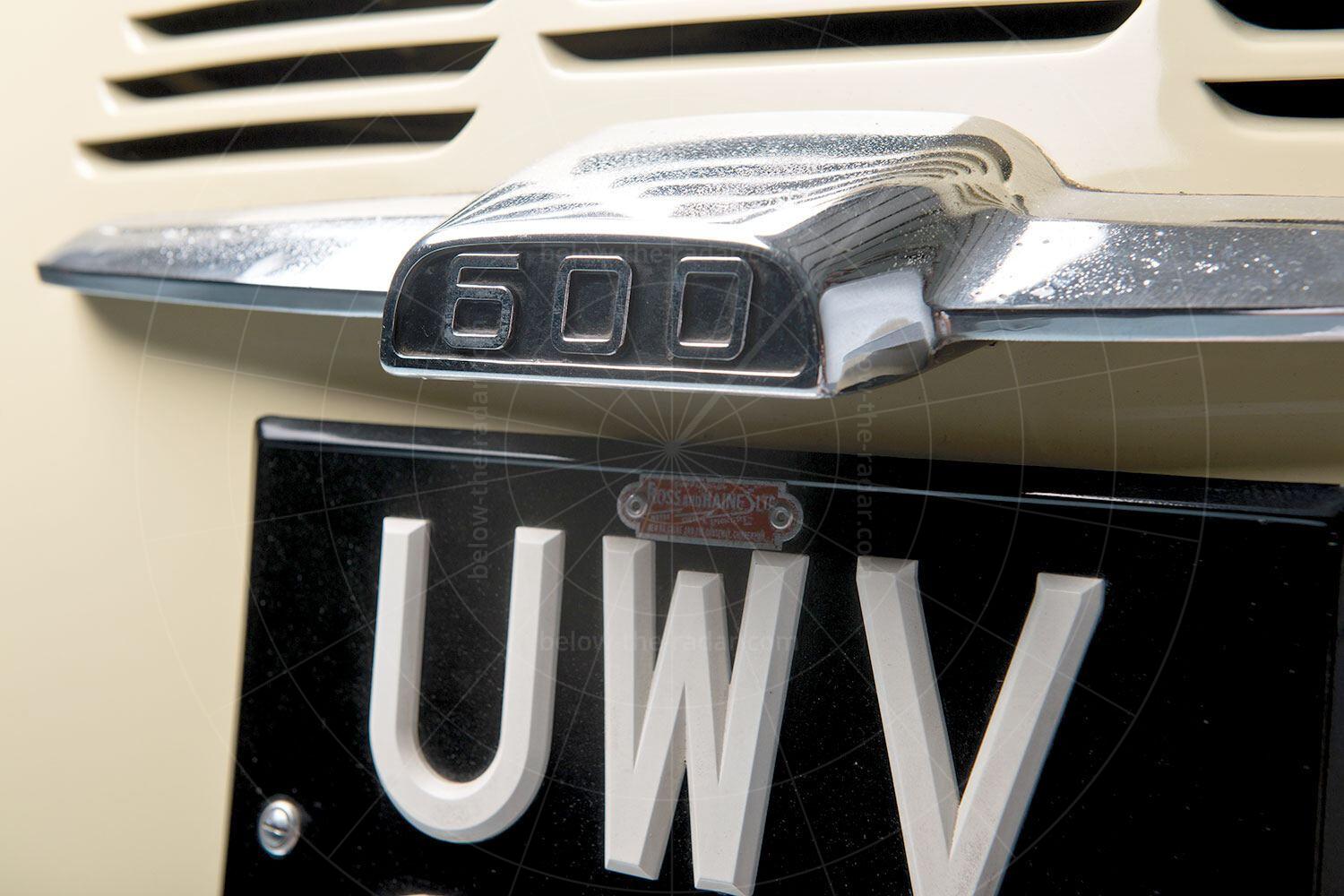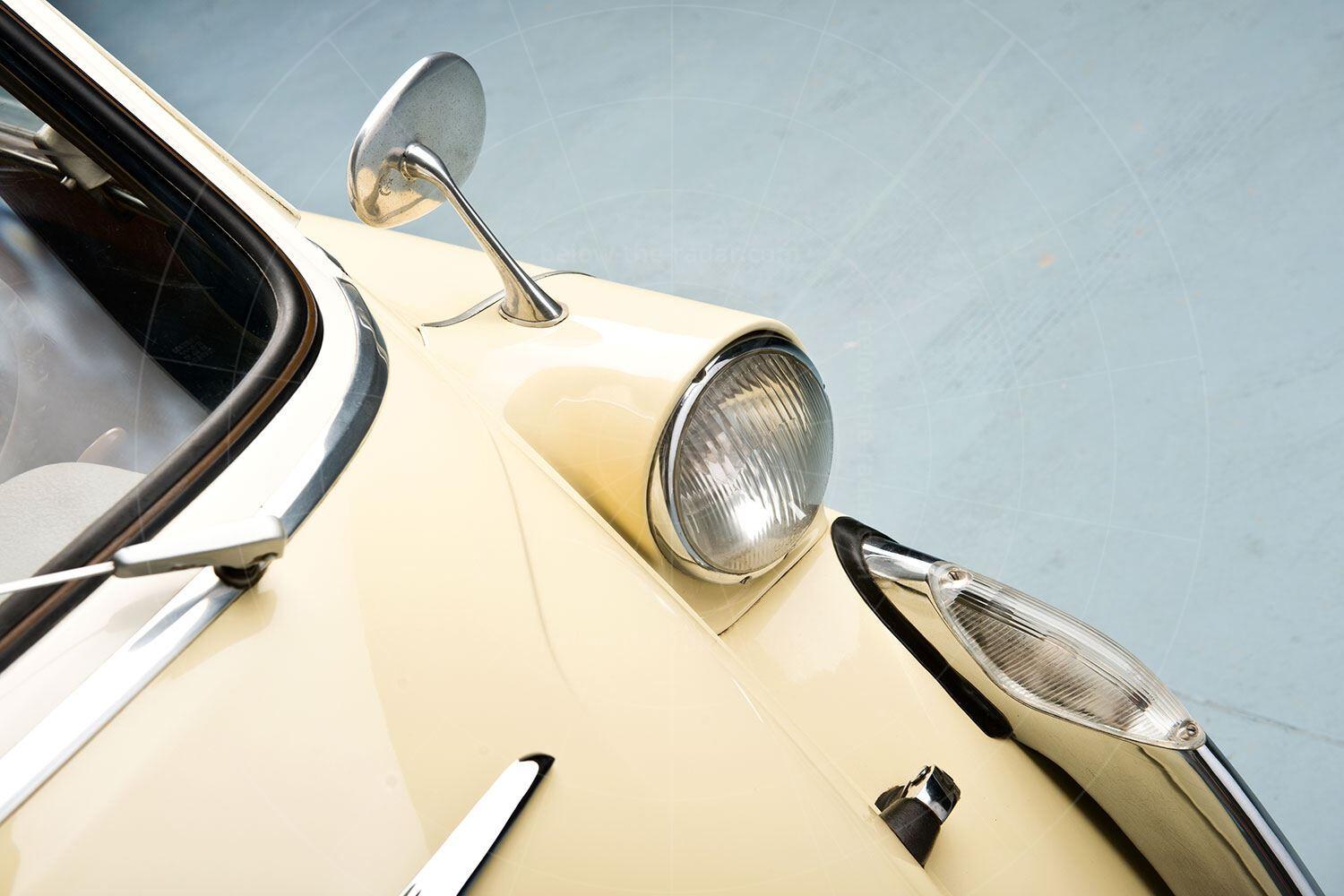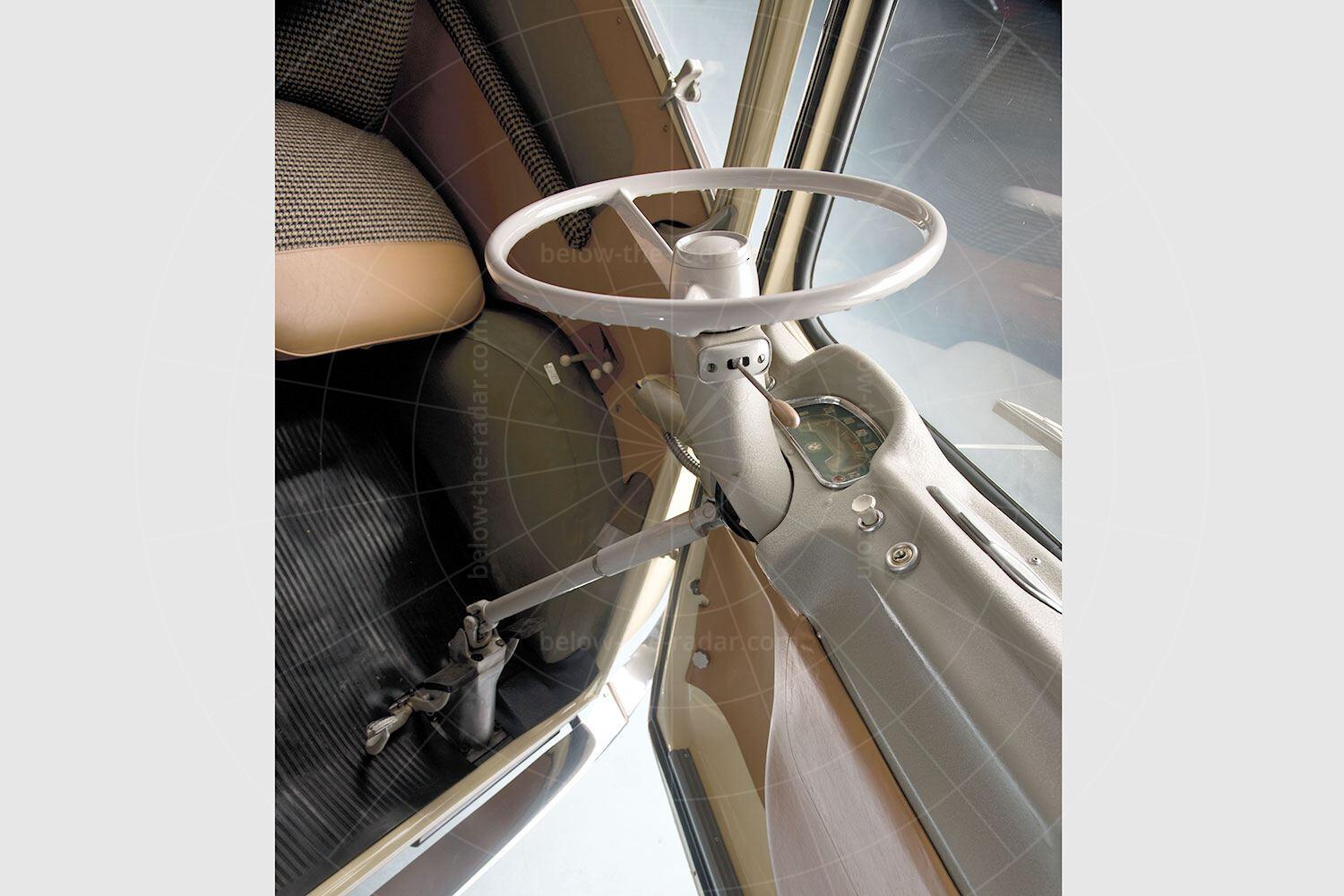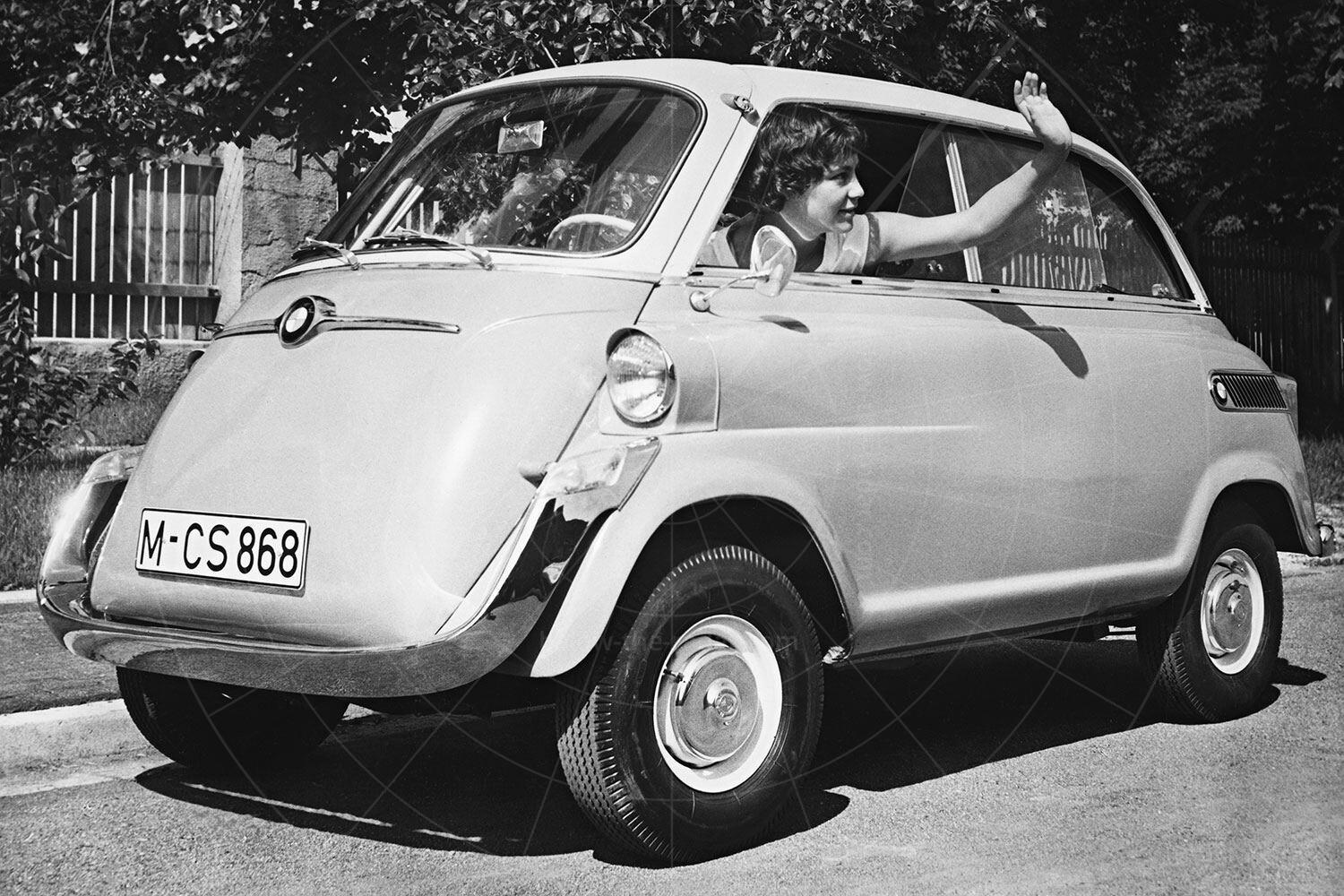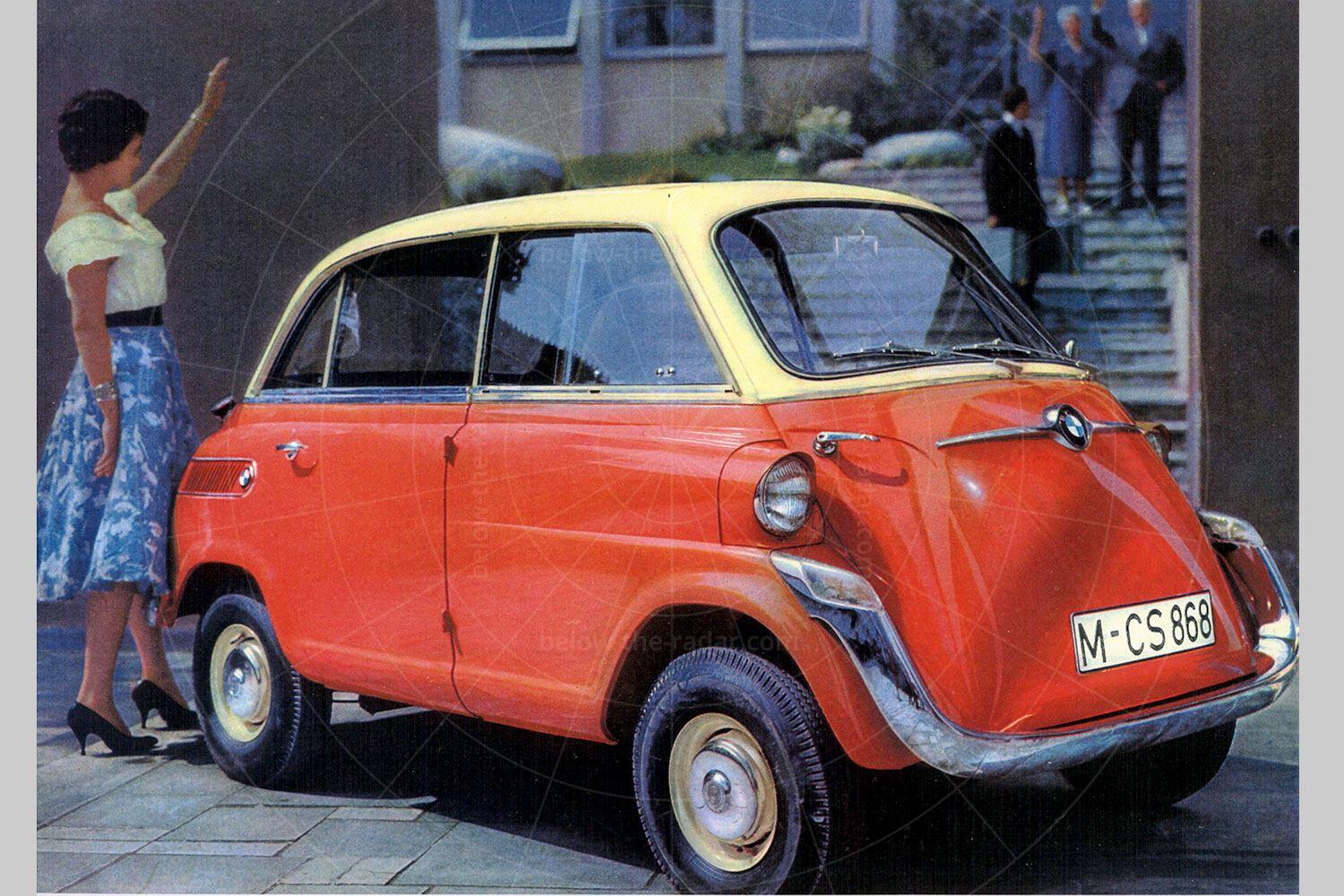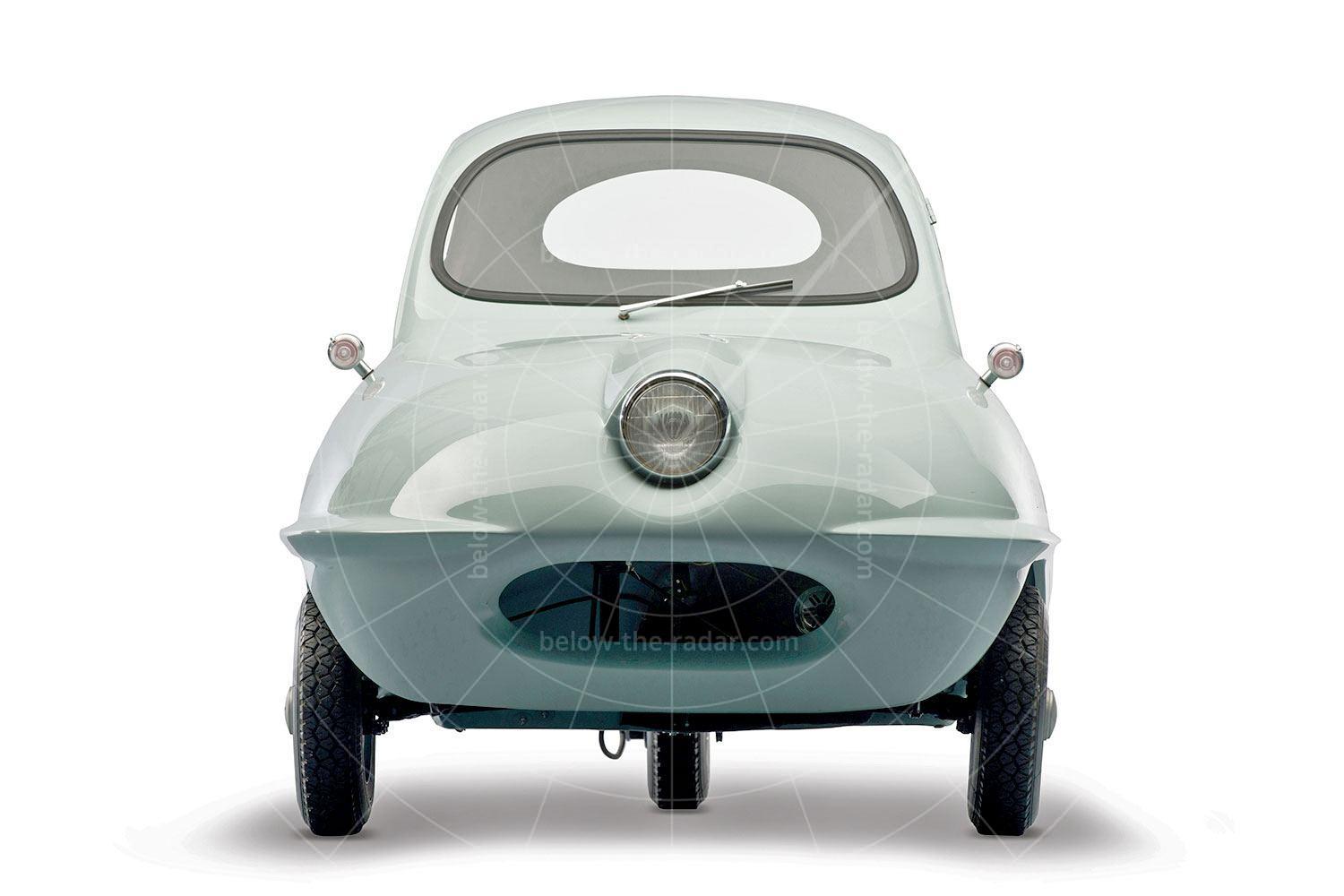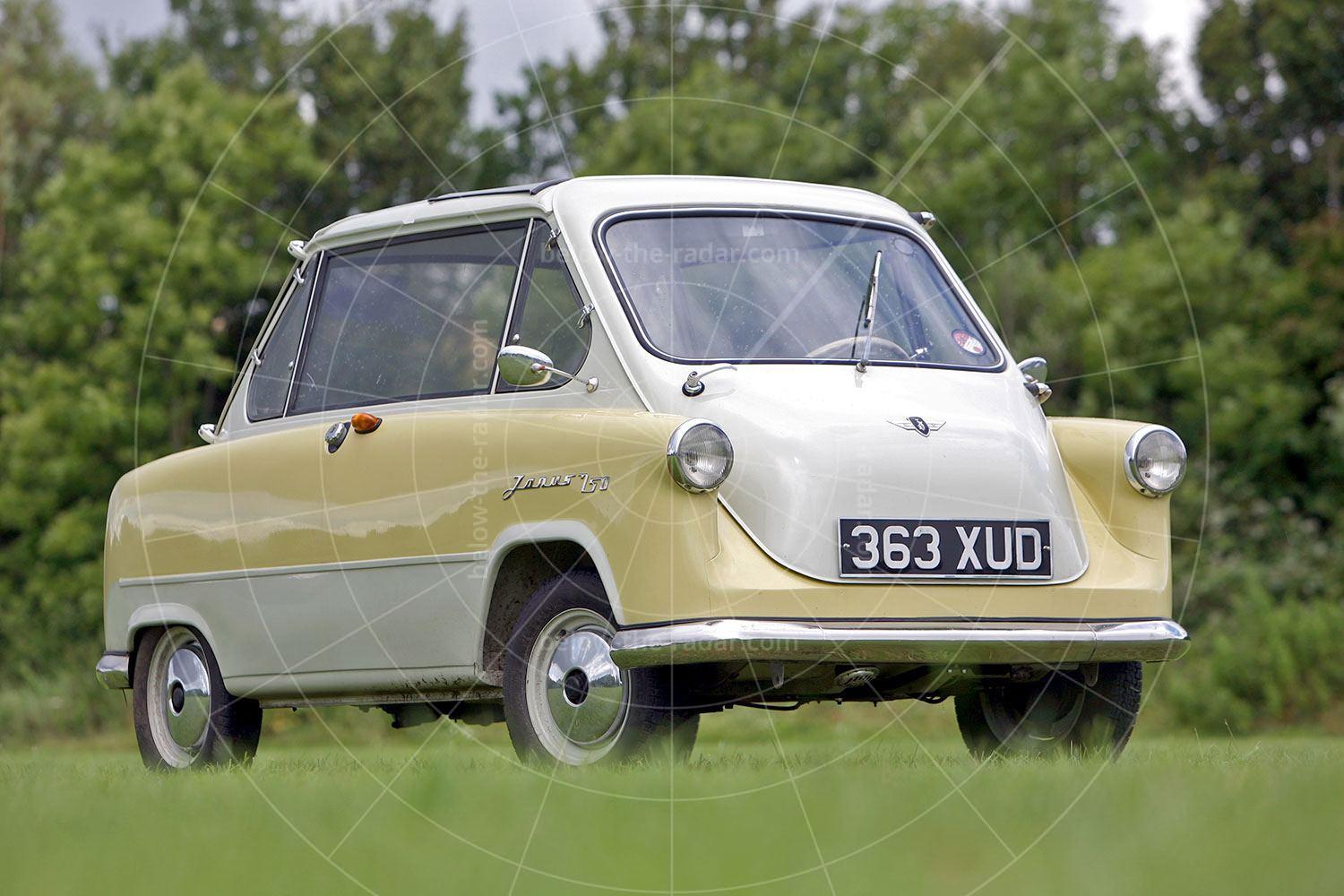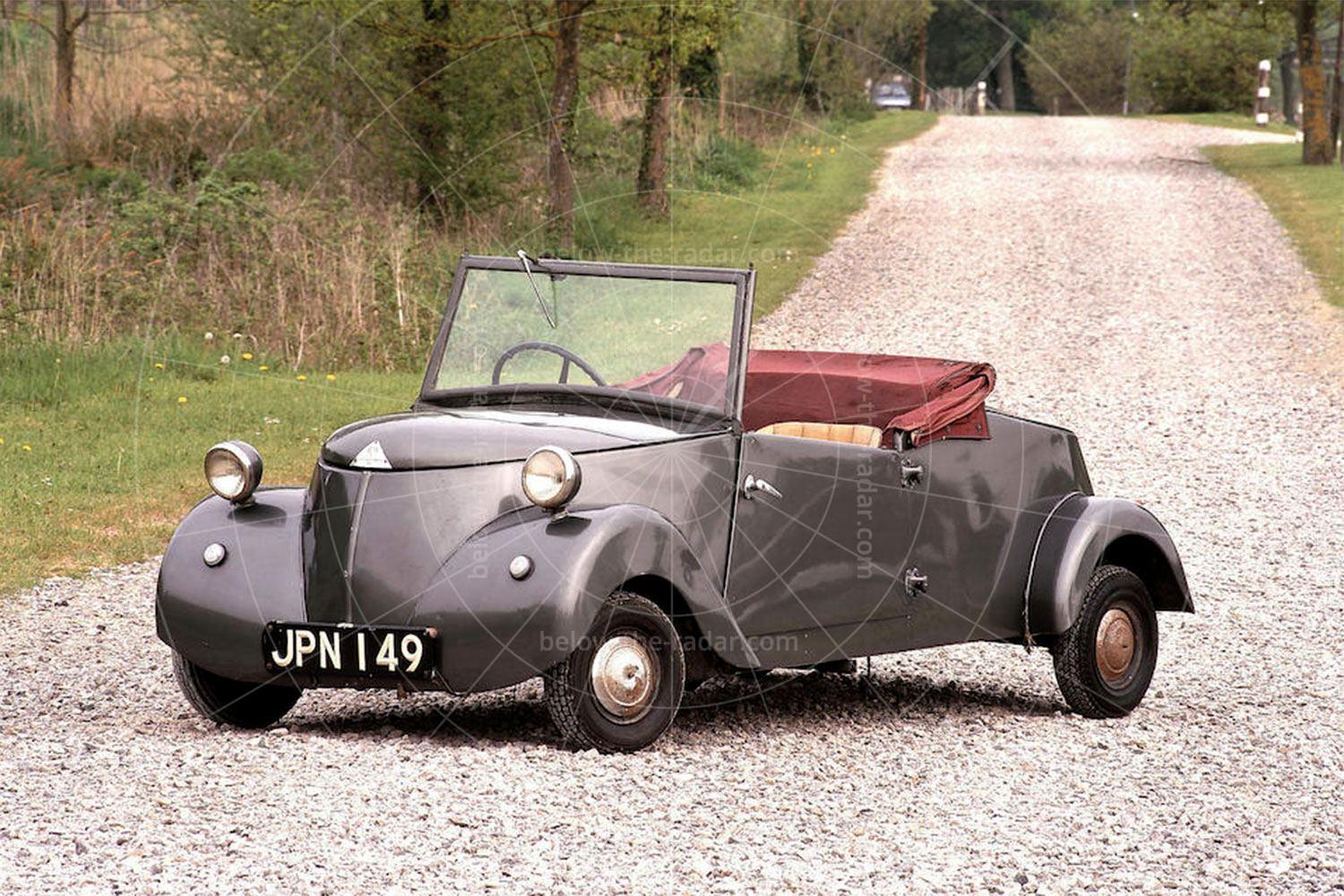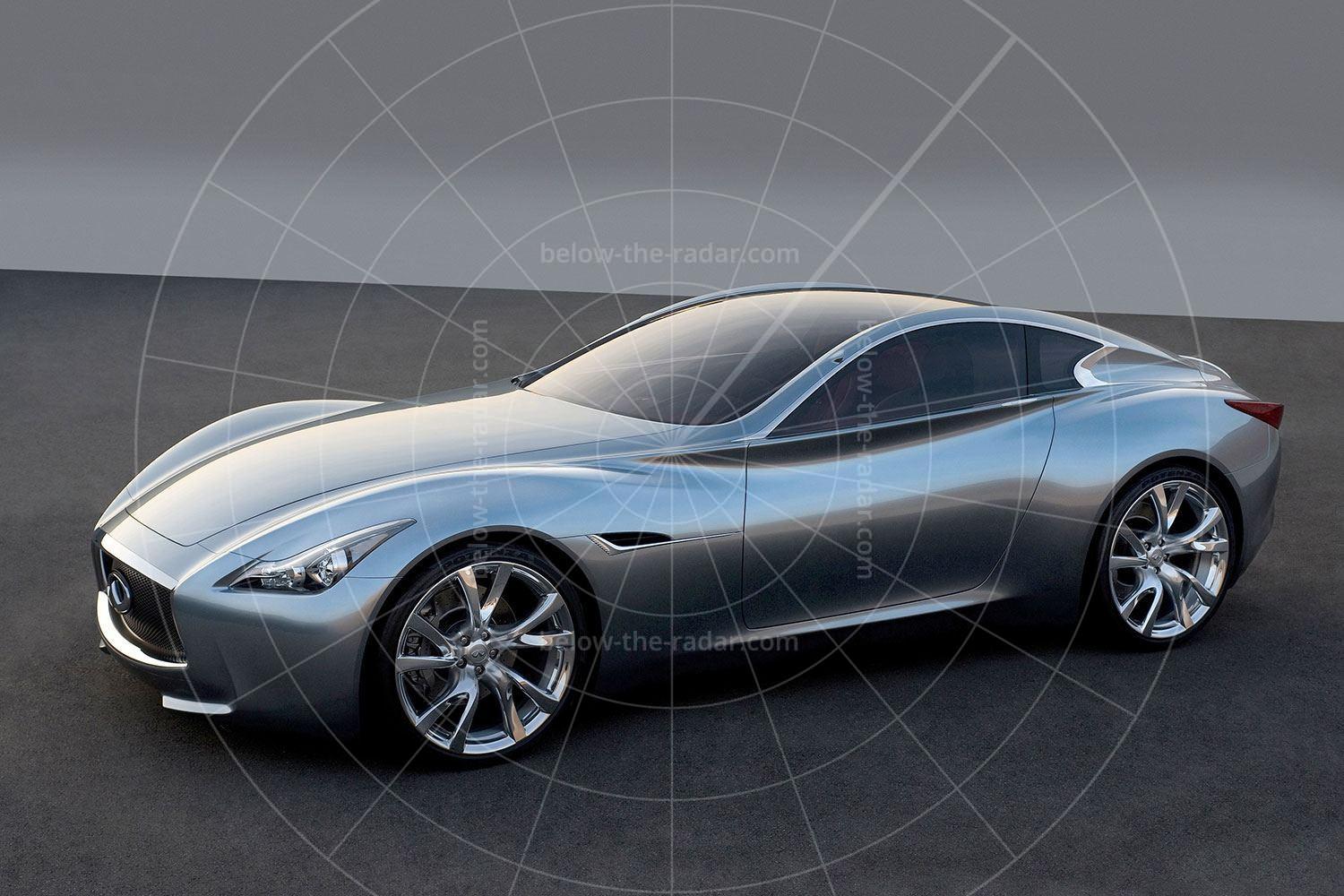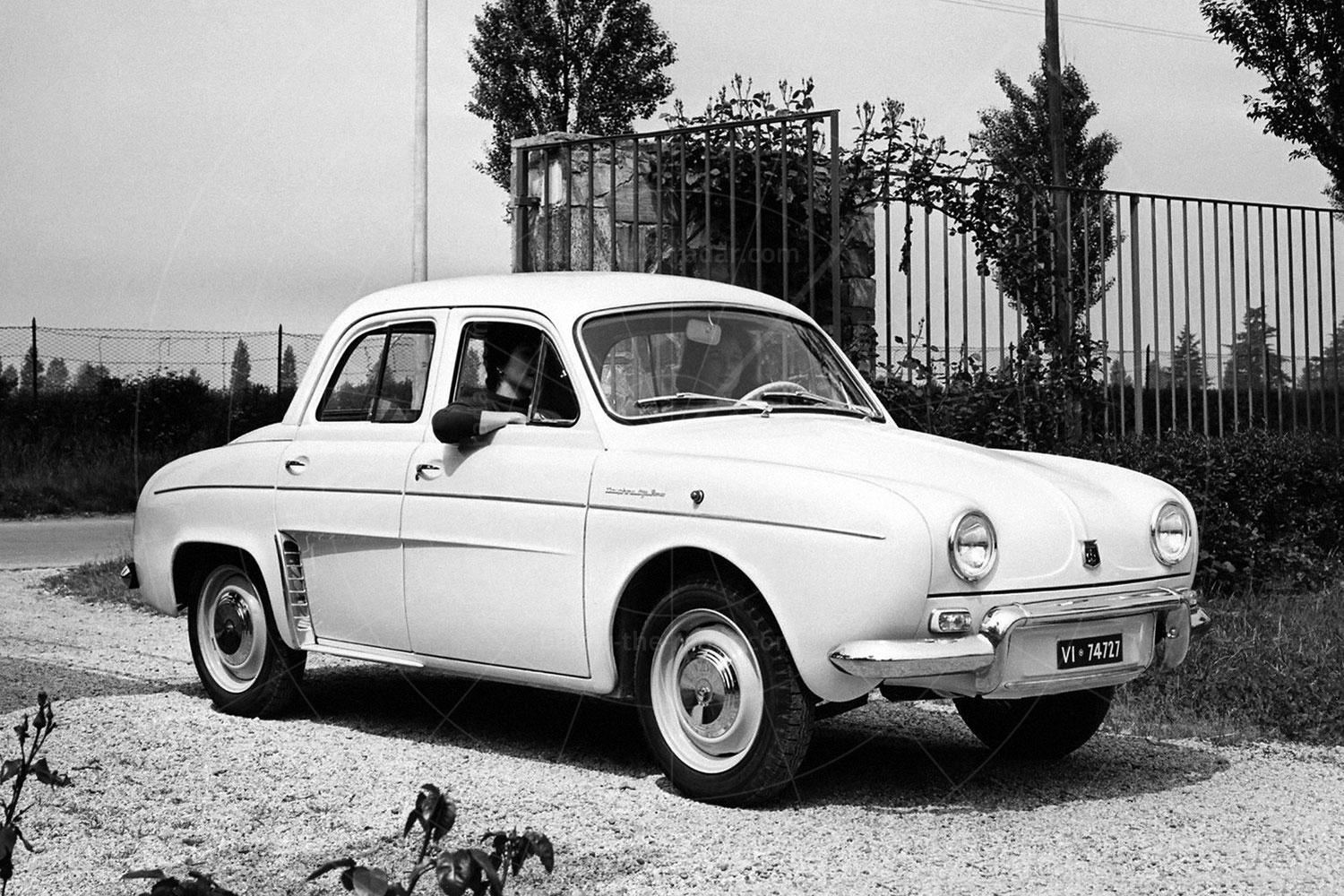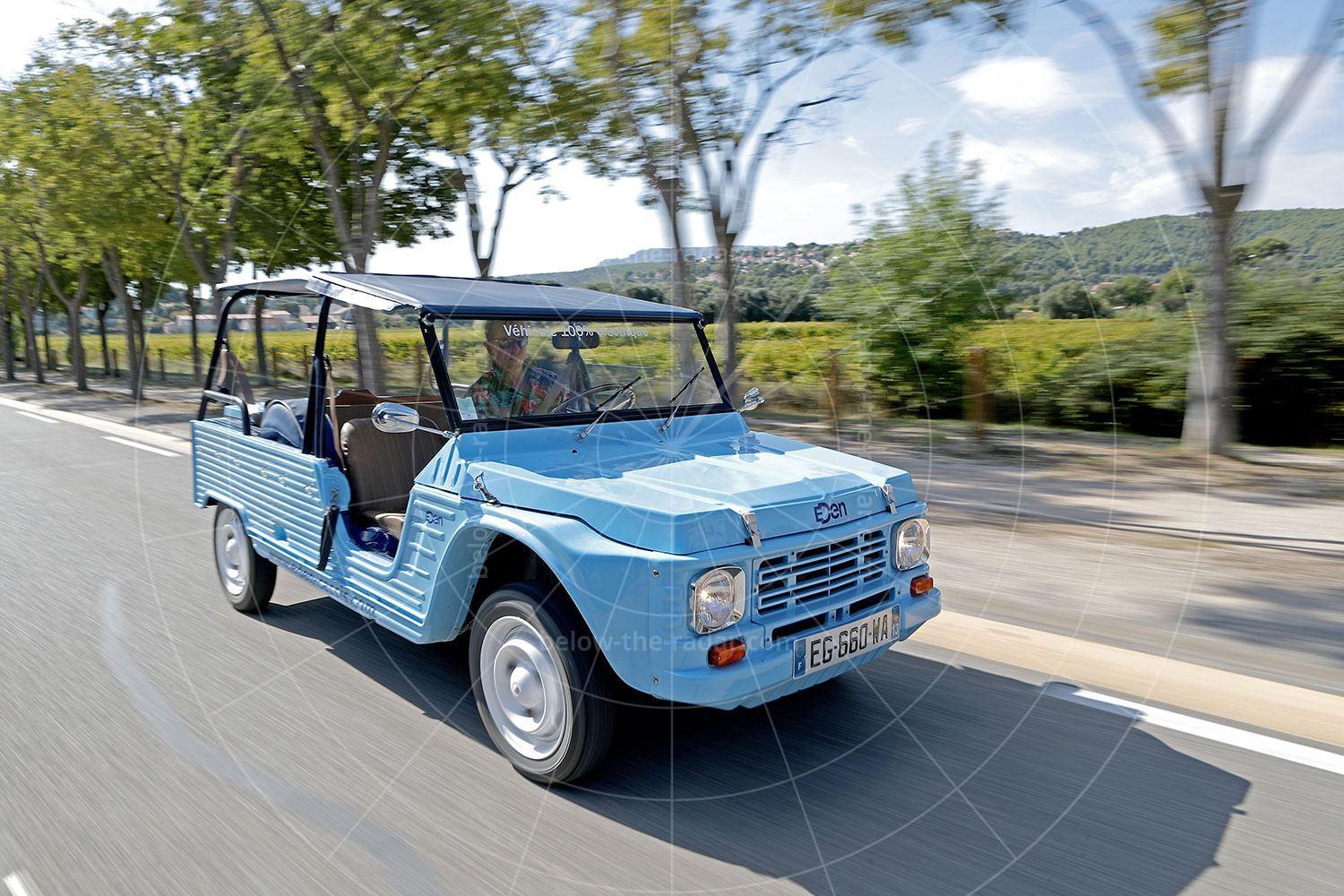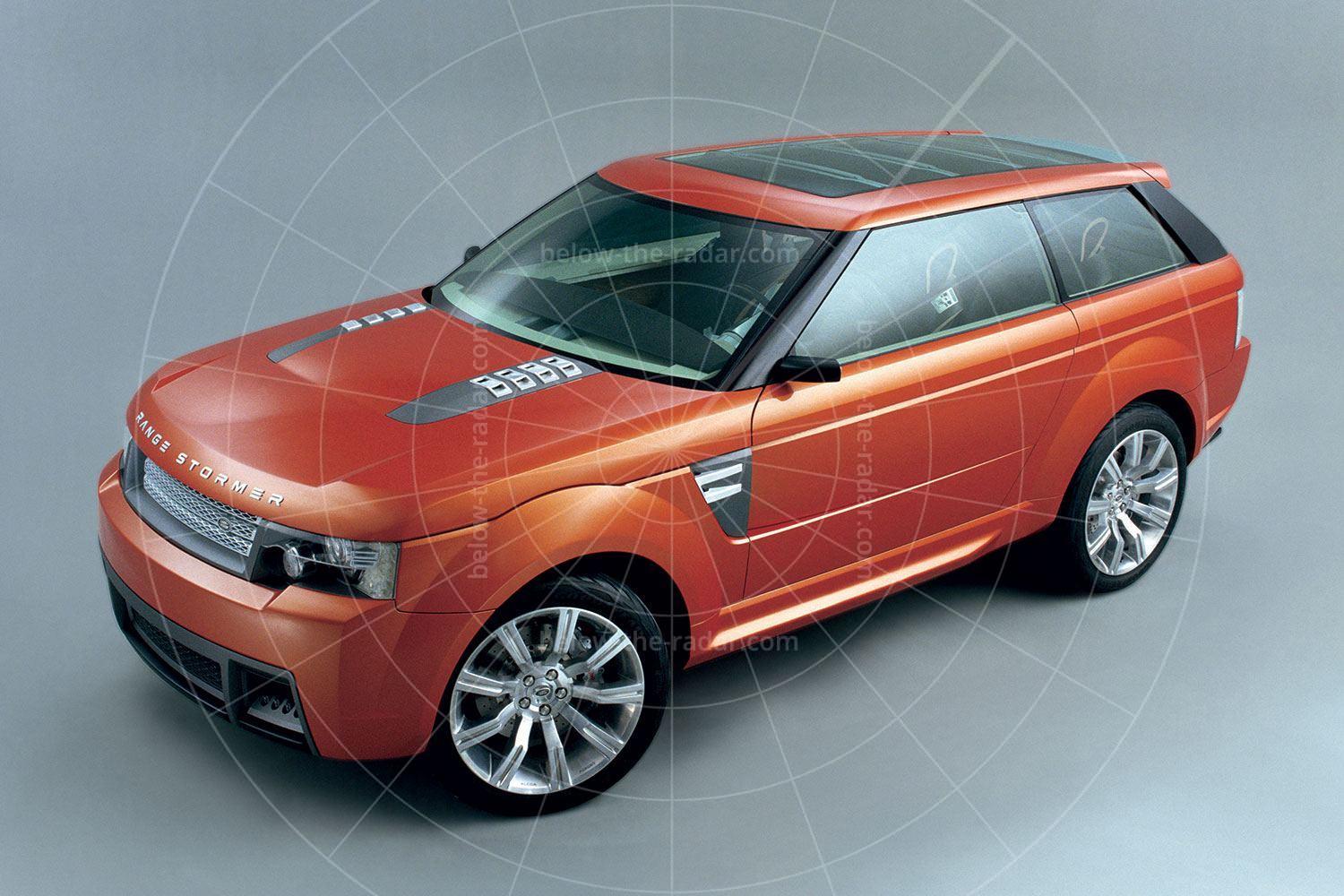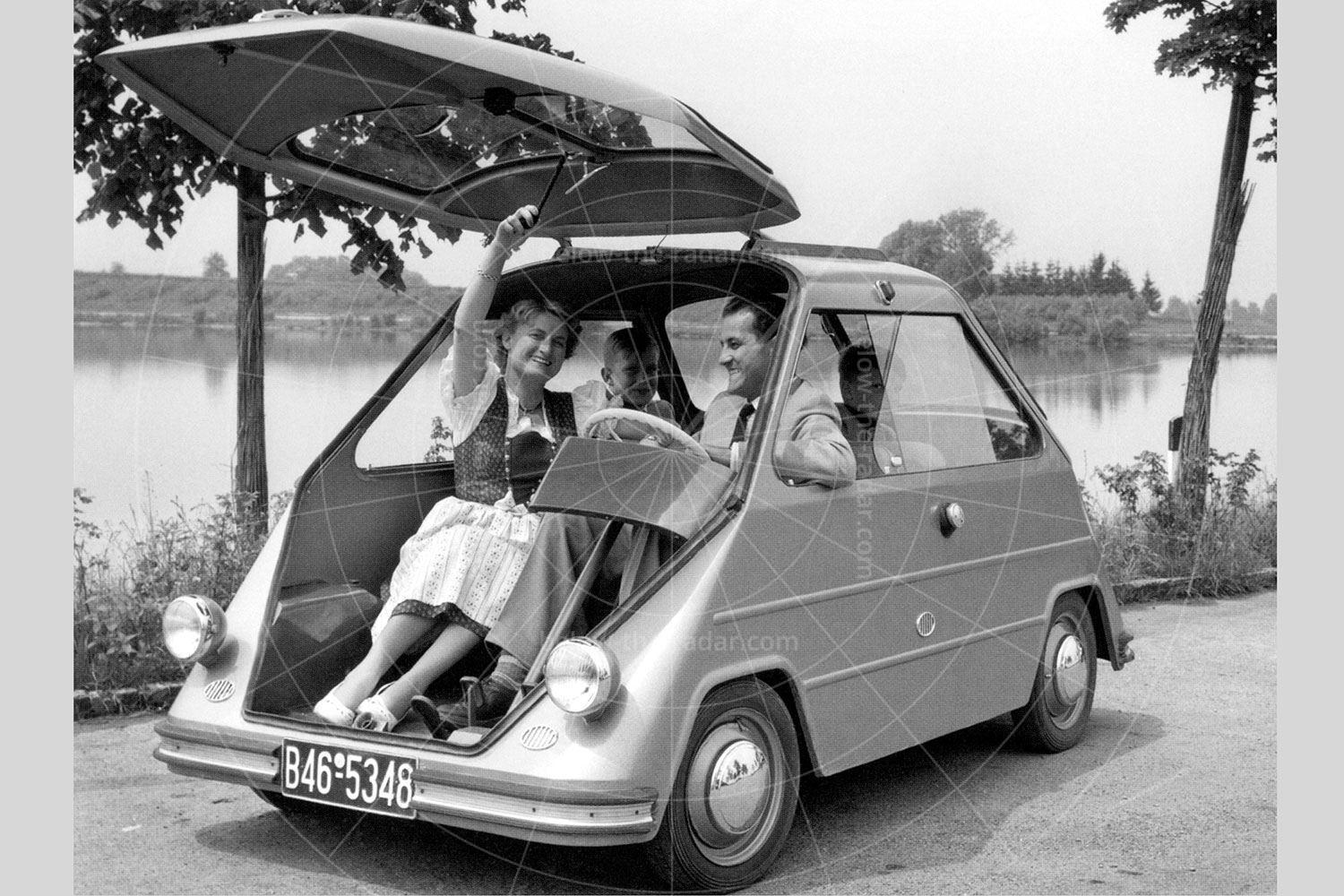You could be forgiven for wondering why a BMW Isetta is being featured on Below The Radar, because let's face it, the titchy German is hardly an unknown car. More than 160,000 Isettas were built between 1955 and 1964, many in BMW's factory in Brighton, in the UK.
But this isn't a BMW Isetta; it's that car's bigger brother, the 600, which is much more unusual. Just a handful were sold in the UK, partly thanks to a high asking price of £676, and partly because the 600 was only ever made with the steering wheel on the left-hand side. Produced between 1957 and 1959, BMW made almost 35,000 copies of the 600, but despite this it's a car that's still largely unknown to many enthusiasts.
In Germany in the mid-1950s, a massive post-war recovery was taking place and the population was no longer satisfied with transportation by microcar. The new symbol of the rising middle class was the hotly contested 600cc segment. Here, the Fiat 500 and 600, the Glas T600, the NSU Prinz, and the Lloyd Alexander fought to seduce buyers, and in 1957 BMW decided to join the fray.
At the time BMW was on the verge of bankruptcy. Its motorcycle sales had plummeted, its 503 and 507 luxury cars were unsaleable as they were far too expensive, and the Isetta bubble car (introduced in spring 1955) wasn't making any money as it was proving much harder to sell than had been predicted, resulting in stocks of unsold cars quickly building.
The thinking behind the 600 made sense. By stretching the Isetta's chassis and fitting a detuned two-cylinder motorcycle engine in place of the Isetta's single-cylinder unit, there would be ample performance while also keeping manufacturing costs under control. The chassis was advanced, with coil springs and telescopic dampers at each corner, with much more travel than that of the Isetta to improve comfort levels significantly.
The BMW 600 made its public debut in September 1957, and it was clearly an evolution of the Isetta, but the design had been skilfully updated thanks to the work of Giovanni Michelotti. The iconic folding steering column, which opened with the door, was retained, and driver ergonomics were well-thought out. The large glass area made the interior a bright and airy place and provided a very clear all-round view.
As soon as the BMW 600 appeared it started to rack up the plaudits, with the press on both sides of the Atlantic quickly warming to it. They loved its simplicity, quality, comfort, practicality and performance, but buyers weren't so easily swayed and they chose instead to buy Goggomobils, NSU Prinzes and Fiat 500s, all of which were cheaper.
BMW offered 600 buyers the opportunity to accessorise their cars far more than rivals, with individual front seats available, along with a heater, defroster, automatic transmission, Blaupunkt radio, roof rack, tow bar, cigarette lighter, ashtray, floor mats, mudflaps, stoneguards, a locking fuel cap, an engine compartment lock, fog and reverse lamps, sunshades, hubcaps, wind deflectors, and windscreen washers all available. But all of these added cost to what was already an expensive car, and stockpiles continued to build.
Although the 600 was meant to save BMW, it pushed the company further into the red. The company had borrowed 7 million deutschmarks in the hope that 400,000 BMW 600s could be sold annually. But by the time production ended in August 1959 just 34,813 had rolled off the production lines, 27,000 of them in 1958 (the only full year of production). Of these it's reckoned that just a dozen were sold in the UK.
In desperation BMW held talks with Ford, GM, Daimler-Benz and Rootes, hoping for a merger, takeover or collaboration – anything to save BMW from going to the wall. There was no interest, but then BMW's Austrian importer Wolfgang Denzel came to the rescue. He insisted that what BMW needed was a small car with 600 running gear, but with much snappier styling – and he told BMW's managing director Heinrich Richter-Brohm exactly that. Denzel was told to come up with a solution and that's what he did.
In July 1958 the BMW 700 was unveiled, designed by Michelotti with a monocoque bodyshell built by Vignale and powered by an enlarged version of the 600's air-cooled engine. Over the next six years BMW would sell 188,121 examples of the 700, which turned enough of a profit for the Neu Klasse saloon to be built – the car that would put BMW on a sustainable path to success.
When The Motor tested a BMW 600 in 1959, it was clearly impressed, introducing the compact family car as "a lightweight German mile-a-minute four-seater of exceptional compactness and operating economy".
The 600 was so compact that acccording to The Motor, it was 22 inches shorter than any British-made four-wheeled four-seat car, but despite this the BMW could genuinely accommodate four adults. Even better, the back seat could be folded estate car-like for added versatility. The front-seat occupants climbed in via a forward-opening side-hinged door, just like the Isetta's. The back seat was accessed by a door on the right-hand side of the car, which meant that in the UK any rear-seat occupants had to get in and out on the roadside rather than the pavement.
The fundamental stumbling block for UK buyers was the high purchase price. Import taxes meant that a BMW 600 cost £50 more than a Morris Minor, while a Ford Anglia was a massive £105 cheaper. However, the BMW did promise low running costs with excellent reliability. The Motor wrote:
The most impressive thing about this little BMW is its economy of running costs. Engine oil consumption during our test was virtually nil, the cheapest grades of fuel sufficed, yet the overall petrol consumption of 45.2mpg is notably superior to any four-seat saloon which we have sampled which offers at all comparable performance.
The well-balanced design of this small car has been happily successful in allowing good cruising fuel economy figures (such as 59 ½ mpg at a steady 40mph) to be secured without resorting to an exaggeratedly high top gear. Extreme top gear liveliness is not to be expected, but there is pleasantly immediate response to the accelerator pedal in top gear over the vital speed range from 15-20mph, especially when the driver is alone, but also when a heavy passenger load is being carried.
In some respects the handling qualities of the BMW 600 disappointed us, even after a worn-out rubber bush at one end of the steering drag link had been renewed (the test model had about 17,000 on its odometer) to eliminate lost motion. It soon became natural to take advantage of the compactness and lightness of the vehicle by weaving through traffic in very brisk fashion, but whilst roadholding was good the steering remained slightly less light and less quick in response than we would have expected.
In recent years orthodox small cars have gradually been growing up and a new breed of miniature cars has come into being, but in this country a wide gulf has been left between the small cars with over-900cc engines and the miniature cars with engines of under 300cc. In Britain, perhaps, the greatest importance of the BMW 600 is, as a reminder to both manufacturers and car buyers that, somewhere mid-way between these sizes a compromise can be struck which combines most of the carrying capacity and effortless performance of one with most of the compactness and economy of operation of the other. It is sincerely hoped that before long either this or some equivalent car will be built in Britain so that it can be marketed here at a truly competitive price.
Instead we got the Mini in 1959, which packed an 848cc engine but still offered compactness, affordability, low running costs and a brilliant driving experience with impressive usability. With the Mini around, who needed a 600cc family car?
| Vital statistics | |
|---|---|
| Produced | 1957-1959, Germany |
| Number built | 34,813 |
| Engine | Rear-mounted, 585cc, 2-cylinder |
| Transmission | 4-speed manual, rear-wheel drive |
| Power | 19.5bhp at 4000rpm |
| Top speed | 59mph |
| 0-50mph | 24.8 seconds |
| Price | £676 (1959) |
- The blue 1958 BMW 600 pictured was sold $92,000 by RM Sotheby's in 2013. In the same sale the cream 1959 BMW 600 also pictured was sold for $46,000. Many thanks to RM Sotheby's for allowing the use of its pictures to illustrate this article.

